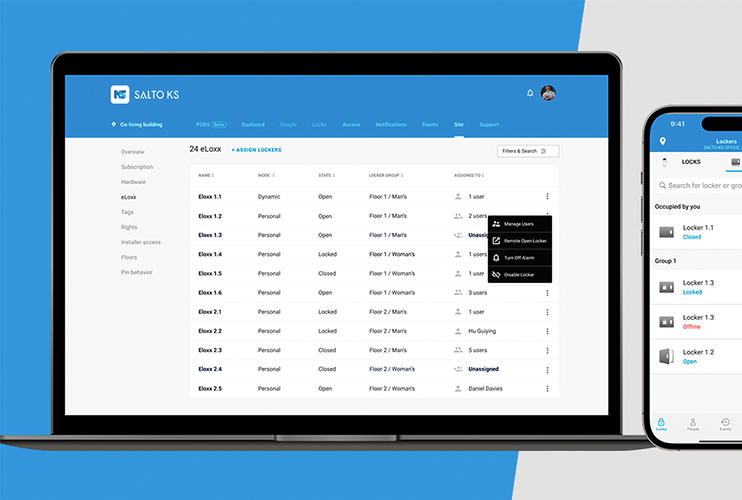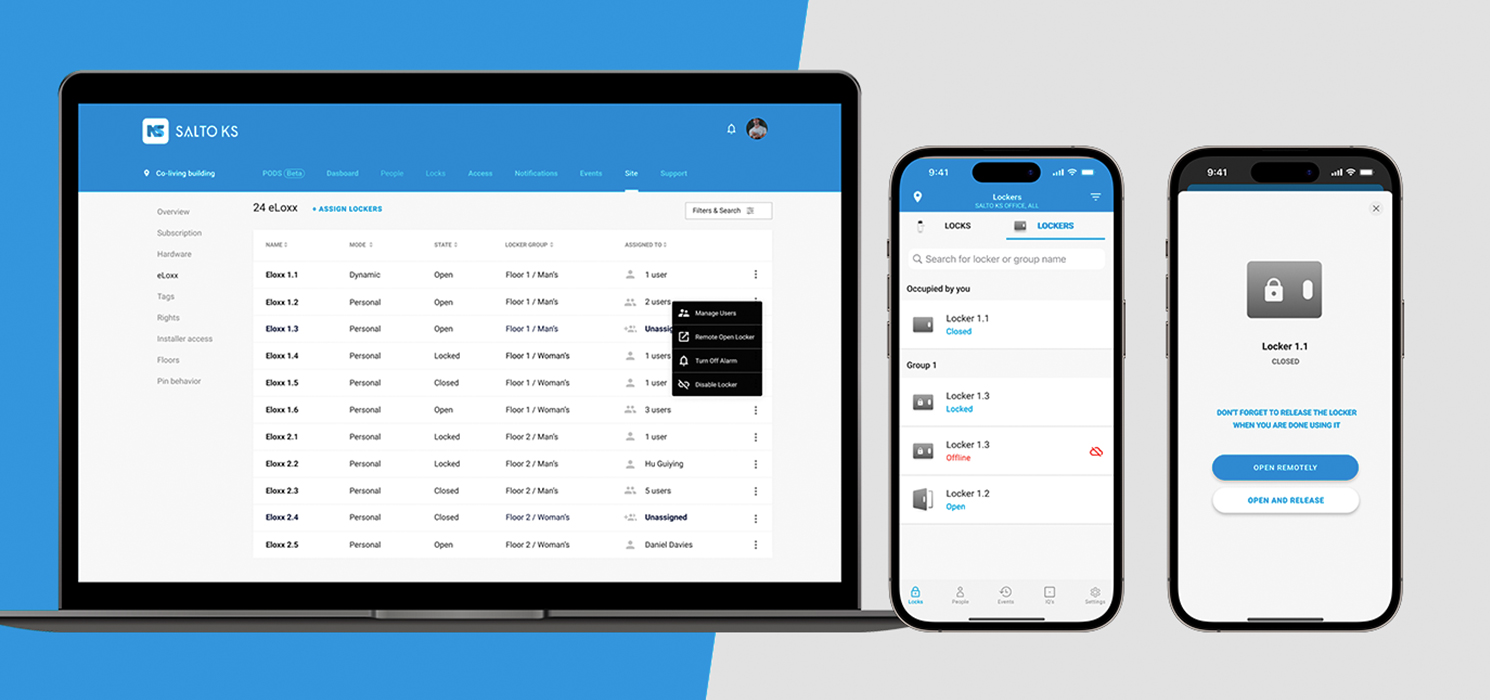Access control is going digital – Are you ready?
For years, plastic smart cards have been the standard in access control. They’ve served organizations well – offering more flexibility and control than traditional keys. But the industry is shifting fast, and the next evolution is already here: digital credentials.
For years, plastic smart cards have been the standard in access control. They’ve served organizations well – offering more flexibility and control than traditional keys. But the industry is shifting fast, and the next evolution is already here: digital credentials.
What was once a forward-thinking concept is now becoming the norm. At Salto, we’ve seen firsthand how the transition from physical cards to mobile and digital access is accelerating – not just as a trend, but as a strategic priority for organizations around the world. These technologies have made access control more secure, convenient, and intuitive than ever before.
From plastic smart key cards to mobile digital keys
Salto introduced its first mobile credential back in 2010. Since then, mobile adoption has grown rapidly, especially with the arrival of BLE and NFC technologies and wallet-based credentials supported by Apple and Google.

Mobile credentials: More than just a key replacement
Moving to mobile isn’t just about replacing a plastic badge with a phone. It’s about delivering a smarter, more secure, and more seamless experience – one that fits into the way people already live and work.
With Salto’s Mobile Access solutions, users can:
- Add access credentials directly to a user, guest, resident, or visitor smartphone
- Unlock doors with a tap of their phone or smartwatch
- Benefit from biometric security (like face recognition)
- Access buildings without needing to carry a physical card, they can use a phone
- Receive or revoke access instantly, anywhere
This is especially valuable for visitors, residents, hotel guests, and hybrid workers, where flexibility and real-time control are key.
Face recognition access control: The next frontier in digital access
Alongside the shift toward mobile credentials, access control is embracing new biometric innovations – with face recognition emerging as a key advancement. With XS4 Face, Salto introduces facial recognition into its access control portfolio, giving users fast, secure, and contactless authentication.
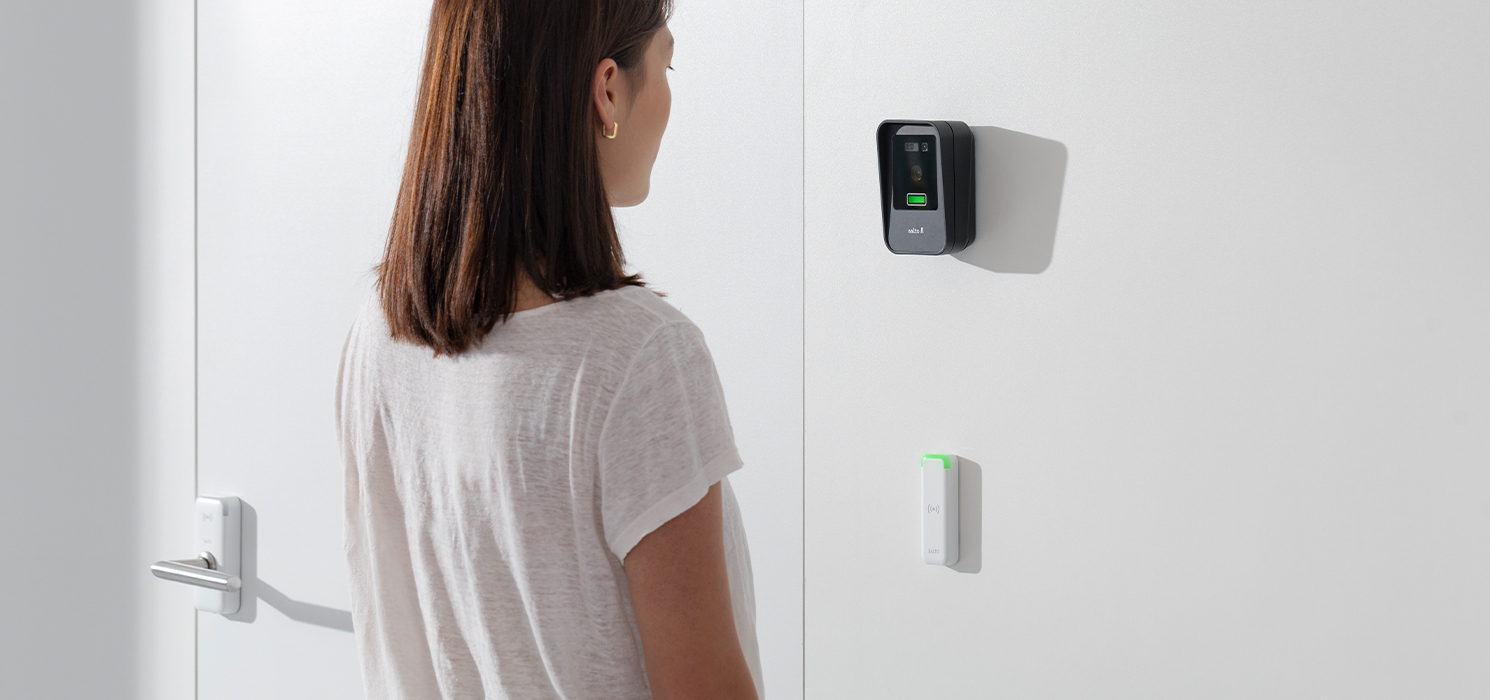
By incorporating digital face credentials, XS4 Face uses advanced algorithms to reliably authenticate enrolled users. This delivers several key benefits:
- Maximum security: Only authorized individuals can gain access, reducing the risk of credential misuse or spoofing.
- Contactless: Fast, intuitive, and hygienic authentication without the need for physical contact – ideal for environments that prioritize both safety and convenience.
- Seamless experience: Mobile enrollment takes just a few simple steps, and access is granted in seconds, eliminating queues and delays.
- Full integration: Designed to work alongside mobile credentials, smart locks, and Salto smart access platforms for a comprehensive solution.
This next stage of digitalization enables organizations to offer access control that is not only more secure and flexible, but also perfectly aligned with modern user expectations for convenience and frictionless technology.
A win for users – and organizations
Mobile credentials and facer recogniton access control technologies offer a better user experience, but they also bring clear advantages for building operators and IT teams:
- Reduce the need for physical cards and printers
- Lower credential management costs
- Streamline onboarding for guests, remote workers, and temporary users
- Strengthen overall security by linking access to verified identities
- Simplify compliance through digital audit trails
As organizations prioritize modern, scalable access control, mobile credentials and face recognition are becoming a cornerstone of that transformation.
The shift is already happening
The move from plastic to mobile is no longer just a future plan – it’s happening now. Forward-thinking organizations are adopting mobile-first strategies to meet rising user expectations and stay ahead of the curve.
At Salto, we’re proud to lead this shift with secure, flexible mobile and face access solutions that help our partners adapt to the changing landscape of access control.
Salto’s fully digital smart access ecosystem
What sets Salto apart in the rapidly-evolving world of access control is our comprehensive smart access ecosystem – a fully integrated solution designed from the ground up to be mobile-first.
Our electronic locking solutions are engineered to work seamlessly with mobile and digital credentials, enabling users to unlock doors using just their smartphones, smartwatches, or face.
This means:
-
Smart locks with built-in mobile support: Salto locks support Bluetooth Low Energy (BLE) and NFC technologies, allowing for secure, wireless communication with mobile credentials and wallet keys.
Thanks to Salto’s innovative SVN (Salto Virtual Network) technology and advanced encryption algorithms, even stand-alone electronic locks can securely support mobile credentials without the need for constant network connectivity.
- Cloud-based: System administrators and operators can instantly issue, modify, or revoke mobile credentials from anywhere, with no need to physically swap keys or cards.
- Interoperability across devices and platforms: Salto supports credentials on iOS and Android devices, as well as integration with digital wallets, ensuring a smooth user experience across Salto smart access platforms Space, KS, and Homelok.
- Enhanced security and data: Every access event is logged digitally, providing detailed audit trails and stronger compliance.
- Scalability for any environment: Whether it’s single buildings, large multi-site campuses, residential facilities, or workspaces, Salto’s mobile-enabled locking solutions adapt to any organization size and need.
By adopting Salto’s fully mobile smart access ecosystem, organizations benefit from the convenience, security, and flexibility that modern mobile credentials provide – all backed by a trusted industry leader continuously innovating in access control technology.
Locker locks for secure storage are also going digital
Salto extends its mobile access innovation beyond doors to include locker locks and other types of secure storage solutions. Just like traditional door locks, Salto’s locker locks now support mobile credentials, bringing the convenience and security of mobile access to personal and shared storage areas.
Salto smart locker mobile solutions are deal for environments such as workspaces, universities, and hospitals where secure, temporary storage is essential. Mobile credentials combined with Salto’s encryption and SVN technology ensure that access rights are always up-to-date, and only authorized users can open lockers.
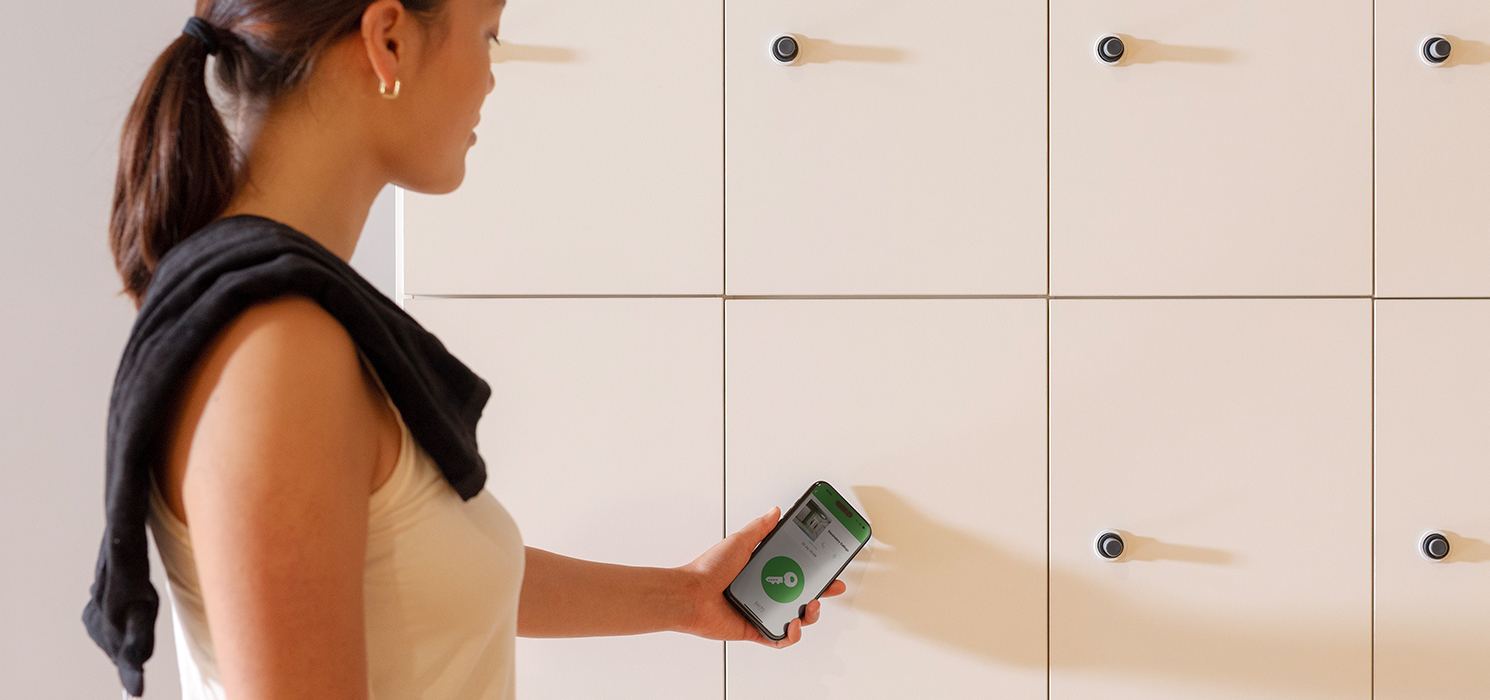
Facility managers can easily assign and revoke locker access remotely, improving operational efficiency and user satisfaction.
Looking to learn more? Click here to explore Salto’s smart access solutions. Make sure to follow Salto on LinkedIn and Instagram for the latest updates.
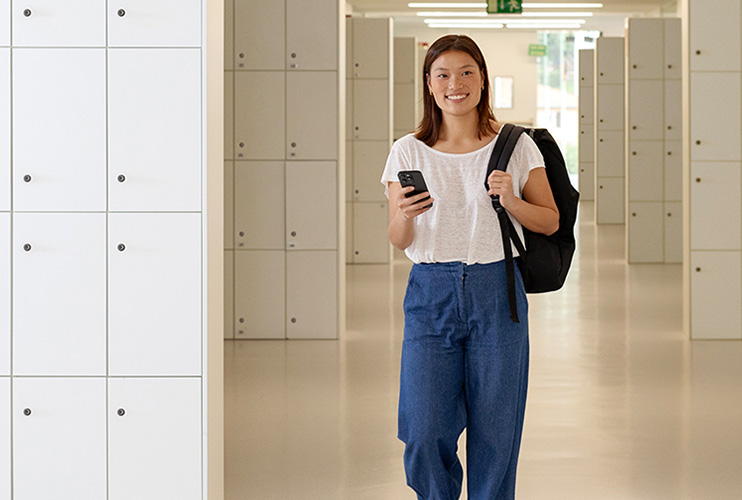
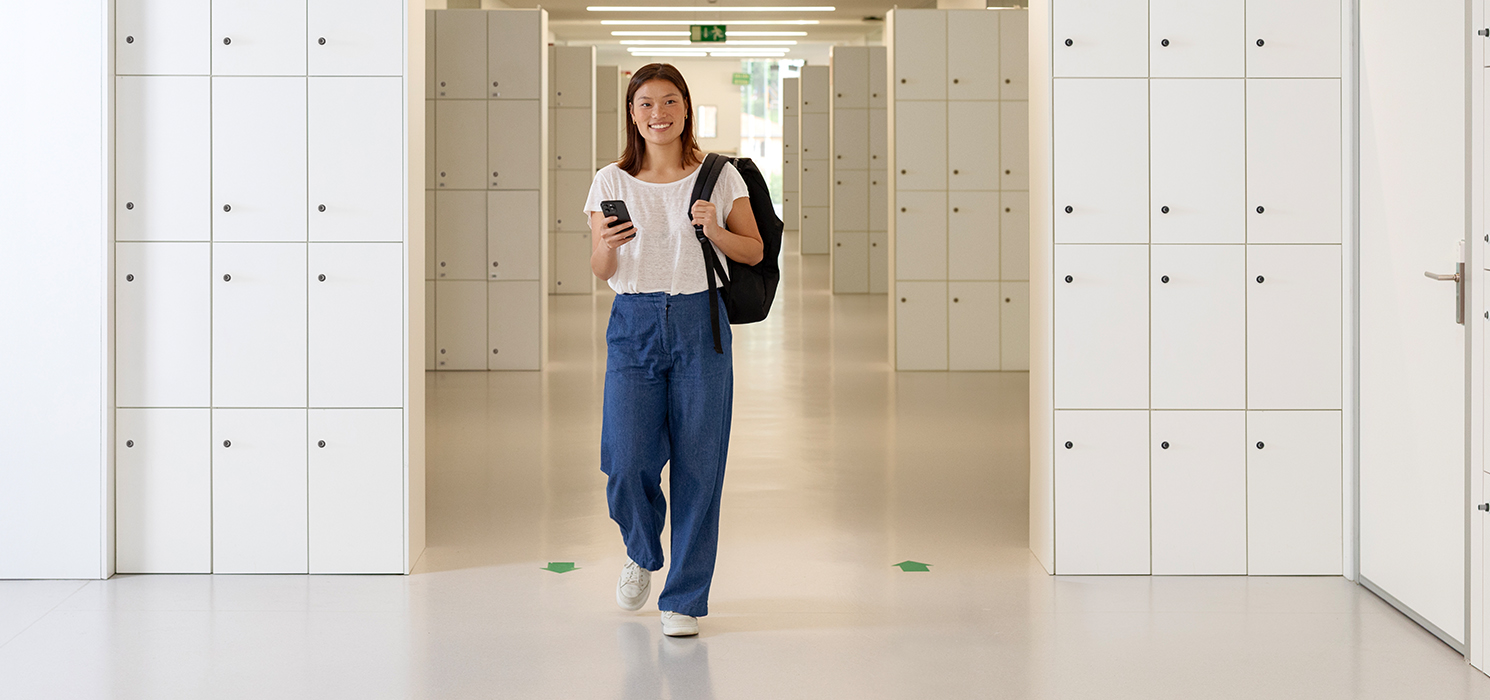
Unlock unlimited door retrofit options for your access control needs
Salto smart locks offer a powerful solution for organisations striving to balance stringent compliance requirements with a seamless user experience.
Salto smart locks offer a powerful solution for organisations striving to balance stringent compliance requirements with a seamless user experience.
Access control has become essential across various industries. But smart locks are changing the way we think about security. In seconds, you can transform any property from just somewhere to live, work, or study into a secure, intelligent environment.
These advanced access control systems do more than lock doors. They streamline entry, support regulatory compliance, and make everyday life more convenient for employees, residents, and visitors alike. In today’s fast-moving world, maintaining control over who comes and goes has never been easier.
The limitations of traditional access control
Traditional locks and access control systems have long been the standard for securing buildings, properties, and facilities However, they come with inherent limitations that can compromise operational efficiency and security.
One major issue is the lack of flexibility. With traditional systems, changing or revoking access permissions often means physically rekeying locks or replacing entire locking hardware. The required infrastructure investment makes this both time-consuming and expensive.
As facilities grow and access needs evolve, distributing and managing physical keys across multiple locations and users becomes increasingly complex and error-prone. This limited scalability makes it harder for businesses to stay agile and respond quickly to changing security demands effectively.
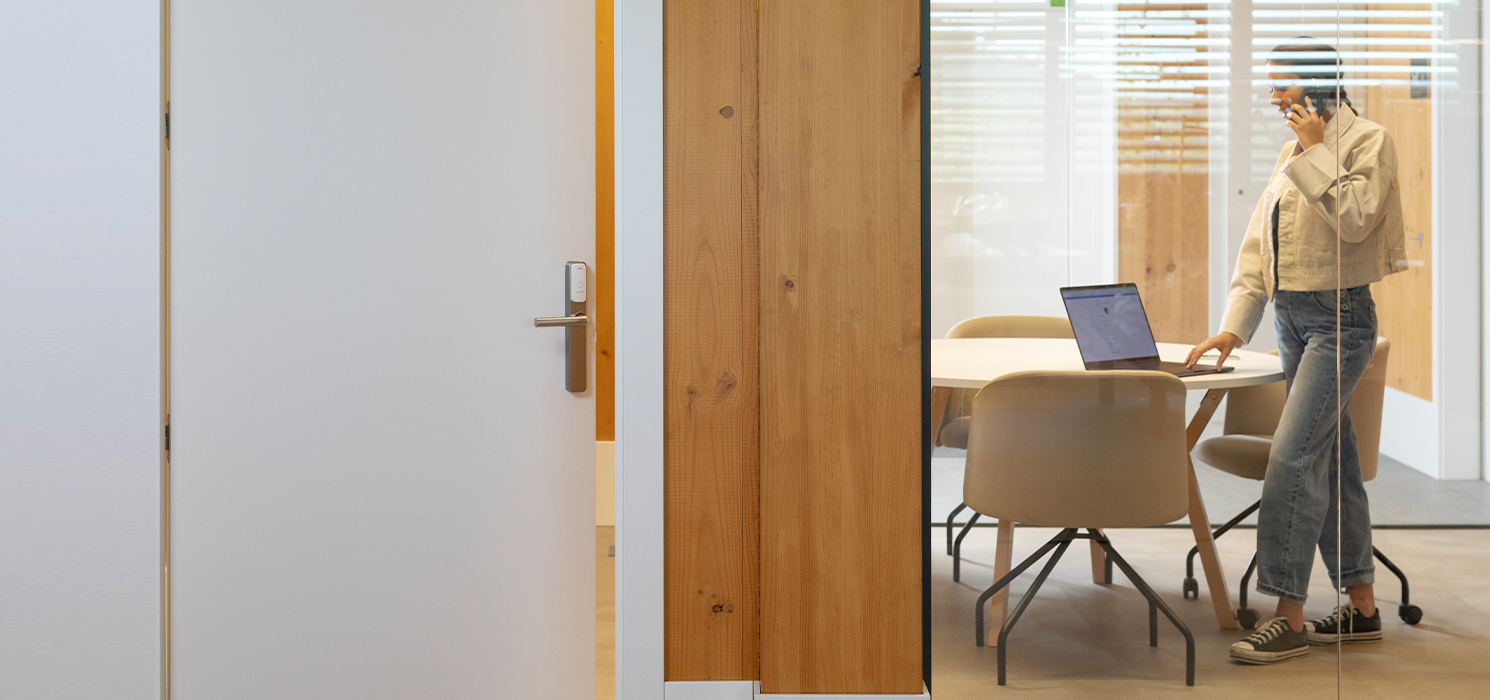
Why retrofit with Salto smart locking solutions?
Salto’s smart locking system stands out as an innovative, wire-free solution for retrofitting access management into any building or property. With their advanced technology and sleek, modern aesthetics, these cutting-edge locks not only ensure top-notch security but also enhanced user experiences.
Are you upgrading an existing system or building a new property? Integrating Salto smart locks into your access control system presents a unique opportunity to improve flexibility, efficiency, and user safety.
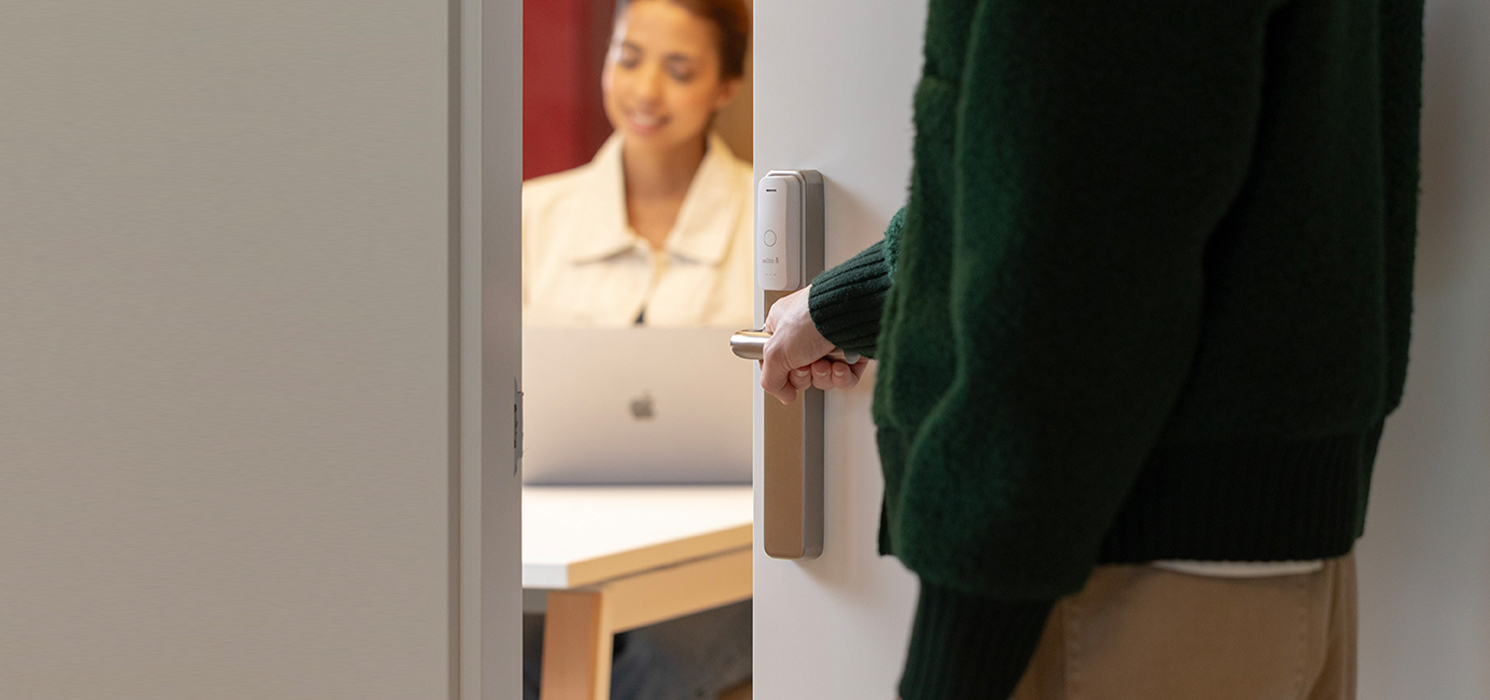
Unlocking opportunities: security solutions for every need
By incorporating Salto’s smart locking technology, you unlock a host of benefits that go far beyond basic security.
1. Fast, simple installation with no extra infrastructure
Traditional locking systems often require lengthy and costly installation procedures. In contrast, Salto smart locks are wireless and easy to install, significantly cutting down time and cost.
There’s no need for complex wiring or additional infrastructure – you can keep your existing doors and locks, making the upgrade quick, simple, and cost-effective. The process is straightforward, too. These smart locks can be retrofitted to almost any door type, including emergency exits and perimeter access points, offering flexibility for virtually any property.
2. Universal compatibility
One of the standout features of Salto’s smart locks is their universal compatibility with a wide range of door hardware and mortise locks. Whether you're upgrading existing doors or installing new ones – in Europe, North America, Asia, the Middle East, or Oceania – Salto locks seamlessly integrate into any environment.
As a result, you can enjoy a hassle-free solution that simplifies installation and provides peace of mind for property owners and managers around the world.
3. A comprehensive portfolio for every access need
We offer a versatile and expansive smart locking portfolio designed to suit virtually any access requirement or door system. From electronic locks and cylinders to padlocks, lockers and wall readers, we provide the perfect solution for retrofitting any type of access. So, whether you're managing high-security areas or more flexible spaces, Salto’s wide range of products ensures that every access need is met with a tailored solution.
4. Reduced installation costs
Retrofitting existing infrastructure often involves costly and time-consuming upgrades. But Salto’s innovative solutions eliminate the need for major renovations. Unlike wired access control systems, Salto smart locks are wire-free, making them incredibly easy to retrofit into existing door hardware with minimal disruption. They can also be installed quickly, saving you time while ensuring seamless integration into your property’s access control infrastructure.
5. Minimal maintenance required
With robust construction and few moving parts, our smart locks require very little ongoing maintenance. This means you can focus on more important operational tasks without worrying about costly repairs or downtime.
6. Always up-to-date
Our virtually networked smart locks communicate wirelessly to deliver real-time alerts, keeping you in control at all times. With over-the-air updates, you don’t have to worry about scheduling on-site maintenance or manual firmware upgrades. These solutions are always up-to-date, ensuring enhanced security and optimal performance at all times.
7. Superior security with enhanced user experience
No need for physical keys – Salto’s smart locks allow users to unlock doors via mobile apps, smart keycards, PIN codes, or face recognition. These keyless credentials not only streamline the user experience; they also enhance safety by eliminating the need for physical keys, which can be lost or stolen. Combining security and convenience leads to a better access experience for both facility users and property managers.
8. Long-term reliability
Security is paramount when it comes to protecting properties, assets, and people. Salto’s durable, reliable smart locking solutions are designed to withstand the test of time, offering unmatched security and peace of mind for property owners, managers, and tenants alike.
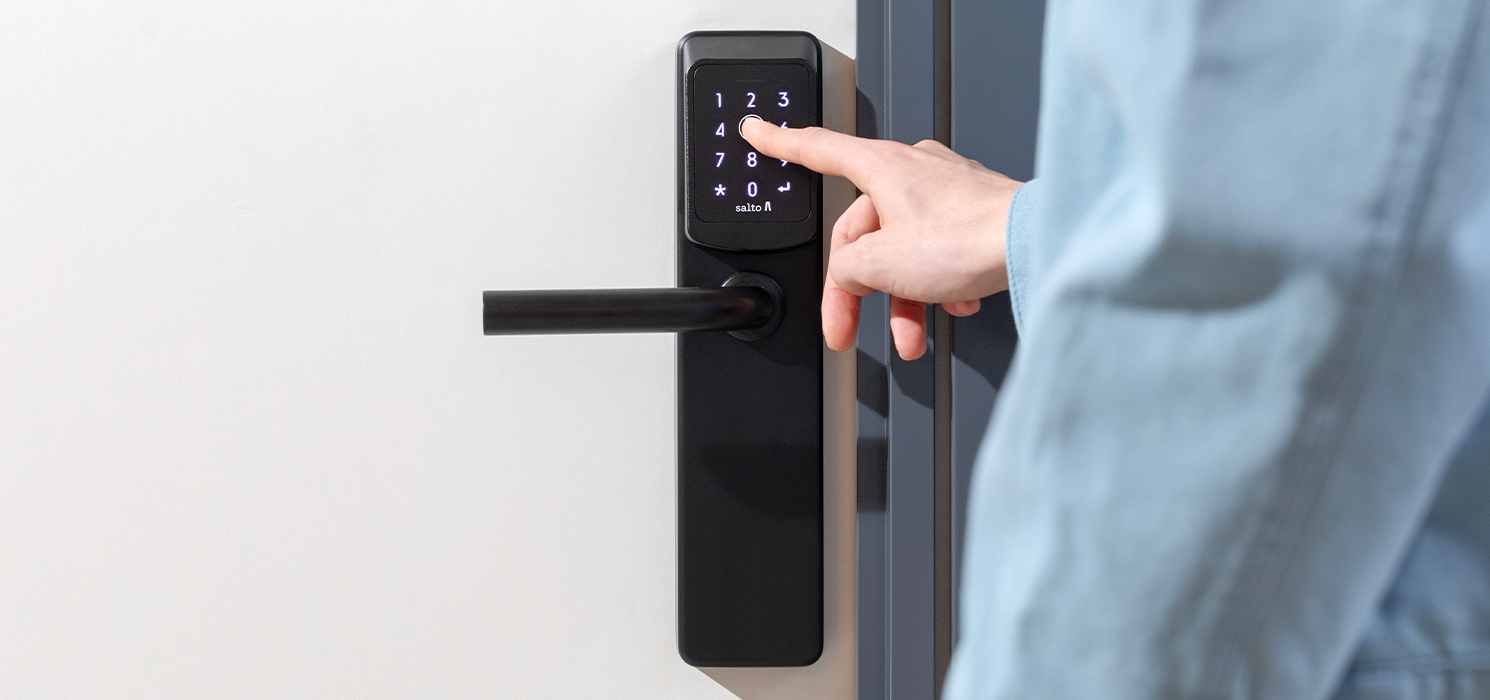
A smart choice for sustainability
As businesses and consumers become more environmentally conscious, the demand for energy-efficient solutions has never been higher. Salto smart locks deliver on this front, offering an eco-friendly security solution. By reducing the need for wiring and minimising the reliance on physical keys, these locks contribute to a greener, more sustainable future.
Salto’s commitment to the environment extends throughout every aspect of our operations. For instance, we recently achieved an EPD (Environment Product Declaration) for our XS4 One and XS4 Original series. We also continue to work tirelessly to reduce our carbon footprint by adopting sustainable practices at every stage of the product life cycle.
For companies looking to optimise their properties while enhancing user experience, Salto’s smart locking solutions are the ideal choice. They offer an environmentally friendly, technologically advanced alternative that aligns with operational efficiency and sustainability goals.
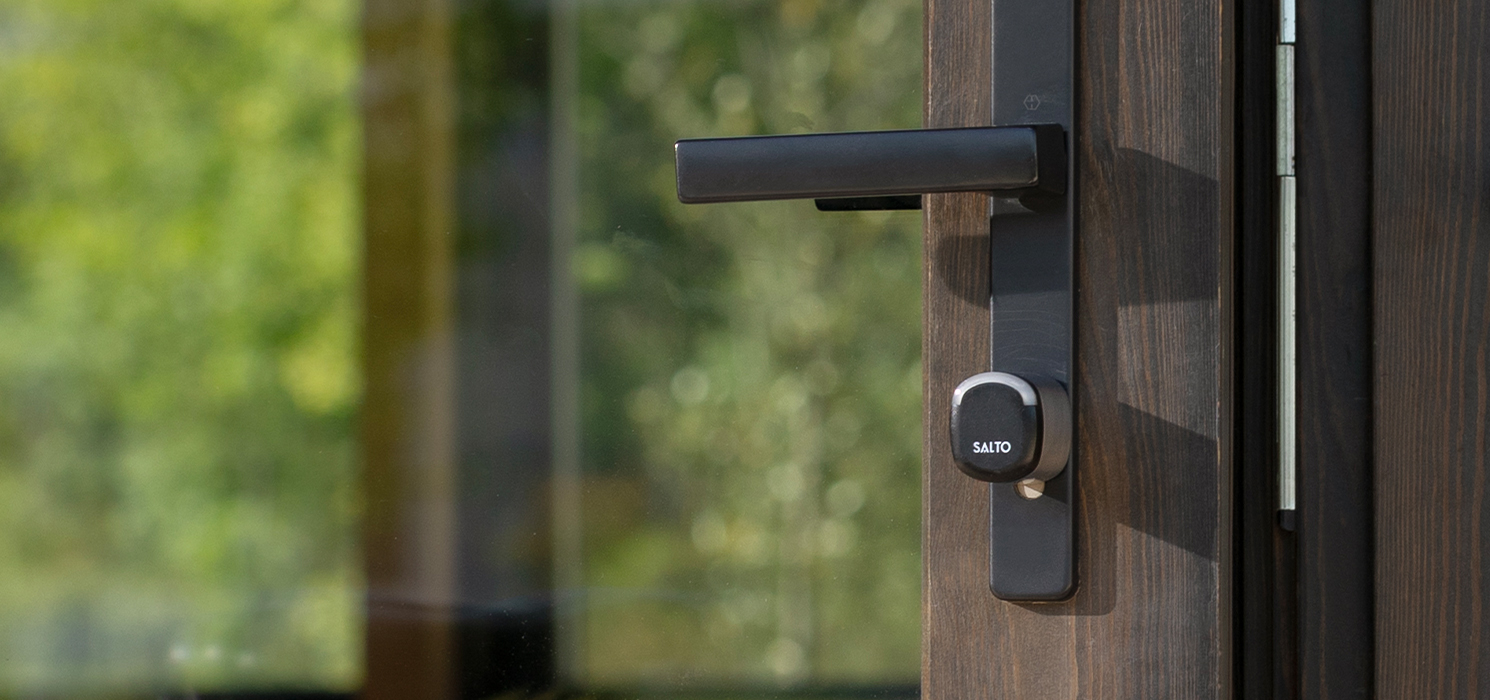
Smart lock technology: a future-focused security solution
Smart lock technology offers a compelling blend of enhanced security, unparalleled convenience, and long-term cost savings that traditional mechanical locks and access control solutions simply cannot match.
Retrofitting your doors with Salto smart locking solutions is more than an upgrade – it’s an investment in the future. By integrating cutting-edge smart access technology, you can transform any property into a connected, secure, and intelligent facility. Whether you're looking to enhance security, improve user experience, or reduce long-term costs, Salto delivers a comprehensive smart access ecosystem that guarantees a more secure future.
Unlock new possibilities to improve the user experience and deliver lasting value throughout the lifecycle of your property.
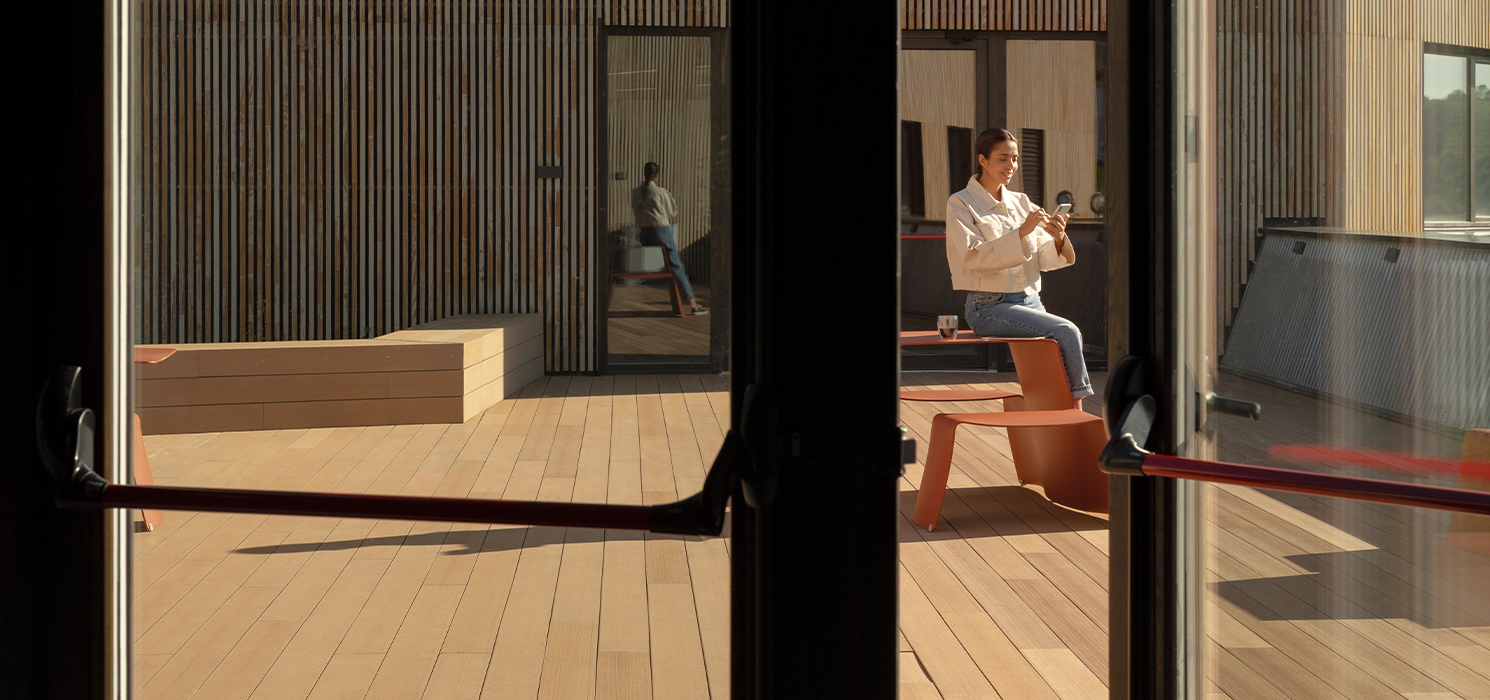
Have questions about Salto’s electronic locking technology? Contact us or visit our social media pages for more information on all things Salto.
Follow us on Instagram and LinkedIn for the latest product features, updates, and news from the industry.
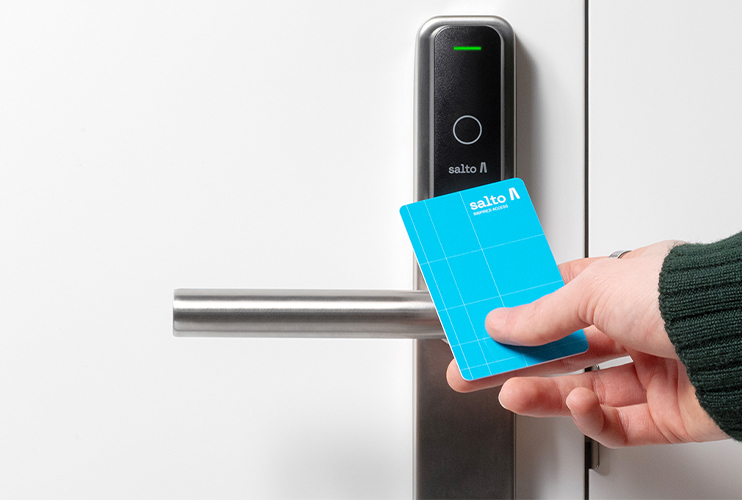
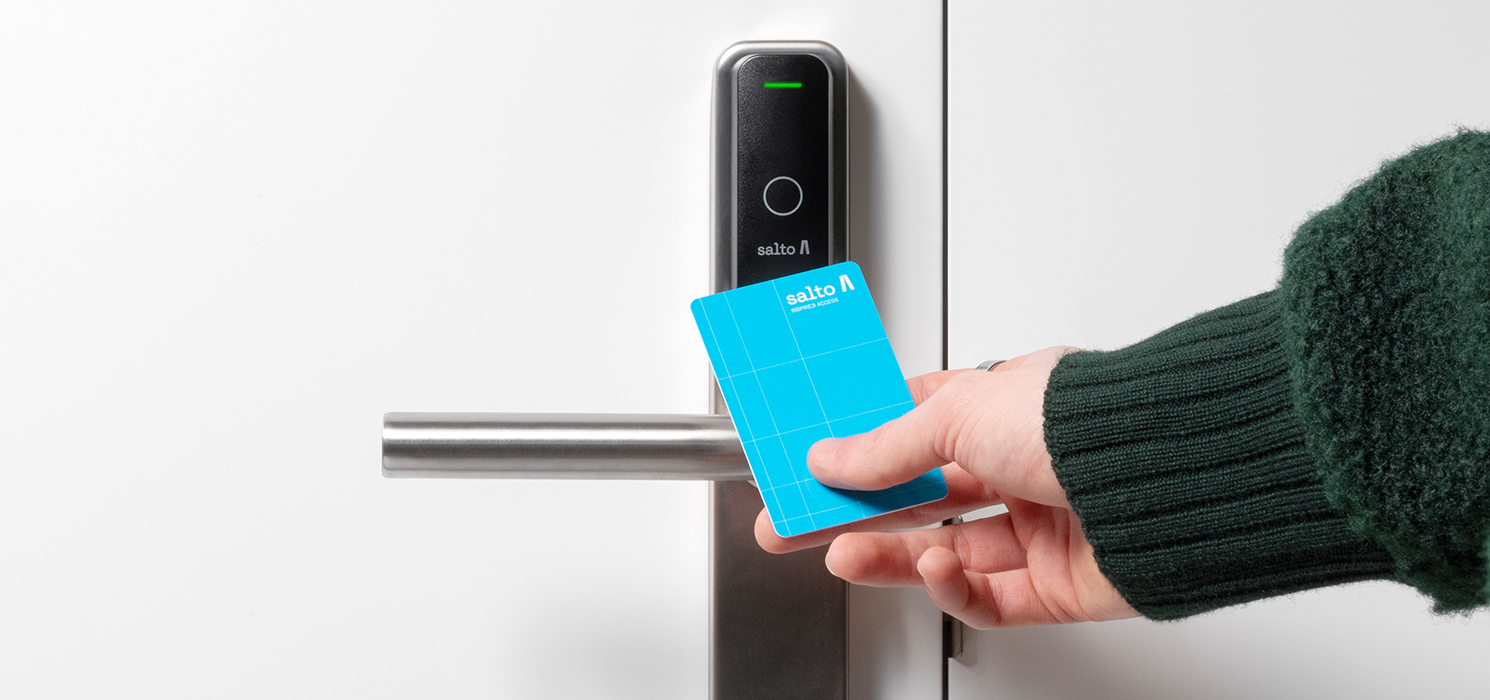
Face recognition: shaping the future of access control and user-centric security
Face recognition technology stands at the forefront of innovation with a promise to revolutionise the access control world.
Face recognition: shaping the future of access control and user-centric security.
Face recognition technology stands at the forefront of innovation with a promise to revolutionise the access control world.
The landscape of biometrics is constantly evolving, driven by the need for robust security measures and seamless, keyless access. At the same time, businesses must meet the growing need to protect users’ privacy while providing a safe experience overall.
Face recognition and identity authentication are emerging as potent weapons in combating the growing threat of identity fraud. Now, the challenge lies in finding the delicate balance between enhancing security and addressing user privacy concerns.
Face recognition: a pivotal technology
Biometric security is an advanced identification and authentication method that relies on unique physical characteristics – such as fingerprints, facial features, and iris or retina patterns – to verify a person’s identity. As technology advances, biometric recognition is increasingly being adopted across various industries. This includes everything from high-security sectors like banking and government facilities to everyday environments such as office buildings, fitness facilities, and even residential complexes.
The growing reliance on biometric security highlights its effectiveness in enhancing both safety and convenience. This pioneering approach not only empowers businesses to exercise complete control over user authentication processes; it also establishes a new benchmark for secure entry protocols and user-centric keyless access experiences.
As biometric security technologies continue to evolve, face recognition is emerging as a leading smart access solution. The effortless integration of face recognition and access control signals a shift towards frictionless access, effectively enhancing the entire security landscape.
Face recognition vs Facial recognition
While the terms “face recognition” and “facial recognition” are often used interchangeably, several key differences make face recognition the future of secure, people-centred access.
- Facial recognition is a biometric process for identifying or verifying a person based on their unique facial features. Often used for mass surveillance, it generally operates on a broader scale, with systems that match faces from a large database through 1:n matching.
- Face recognition, in contrast, is about detecting or identifying faces for the purpose of user authentication, typically used by access control systems to verify identity in real-time. This more precise, 1:1 matching ensures secure and efficient entry to restricted areas.
At Salto, we believe in designing products that aren’t just secure, but also people-centred and accessible. Choosing the term "face recognition" over "facial recognition" reflects our commitment to these values.
The word "face" is inherently personal and relatable, focusing on the individual and the human experience. In contrast, "facial" can come across as more clinical and impersonal. It can make the technology feel detached or invasive, which goes against the welcoming, user-friendly experience we strive to create.
Salto’s XS4 Face technology is built on respect for personal identity, privacy, and the seamless integration of security technology into everyday life. It aligns with our mission to create intuitive solutions that empower people. But just as importantly, it reinforces our commitment to putting people at the heart of everything we do, from product design to customer interaction.

Why face recognition is the future
Face recognition enables quick, secure access without the need for physical keycards, digital keys, Wallet keys on smartphones, PINs, or fingerprint scanners. It’s ideal for spaces that prioritise speed, security, privacy and ease of use. Face recognition relies on users’ unique face data, making unauthorised access significantly more difficult. Here’s what makes face recognition the access technology of the future:
- Enhanced privacy and security: Unlike facial recognition, which can be used in mass surveillance, face recognition systems are designed with a focus on user consent. This ensures better privacy control, allowing individuals to be recognised only when attempting to gain access.
- Improved accuracy and speed: Powered by AI and machine learning, face recognition offers improved accuracy and faster authentication, reducing errors and delays, especially in high-traffic or high-security areas.
- User-centred keyless entry experience: The core benefit of face recognition is its touchless nature, which allows it to provide a fast, intuitive access experience to places or spaces. Users simply walk up to a door that opens automatically once their face is recognised, making this solution more user-friendly than other biometric systems.

The future is here
The digital revolution has transformed society, business, and the building ecosystem, and Salto XS4 Face technology is poised to revolutionise the access control world. Industries spanning professional sectors to educational institutions, hospitality properties, workspaces, sport facilities and leisure establishments have already embraced this transformative technology as a standard practice.
The seamless, contactless, and secure nature of face recognition not only streamlines access to various spaces; it also combines forward-thinking smart access and ID management technology with unparalleled convenience and enhanced security measures. Face recognition systems are redefining how we interact with and secure our environments, ushering in a new era of access control solutions for a digitally driven world.
The future of access control lies in face recognition – not just because it’s faster and offers more security, but because it emphasises privacy, user experience, and ethical considerations. As we continue to develop this technology, it will lead the way in creating secure, efficient, and human-centred systems that make our environments safer and more accessible.
At Salto, we’re committed to creating access control solutions that put people first. Explore how Salto XS4 Face’s innovative face recognition technology is designed with people in mind – enabling seamless, secure access wherever you go.
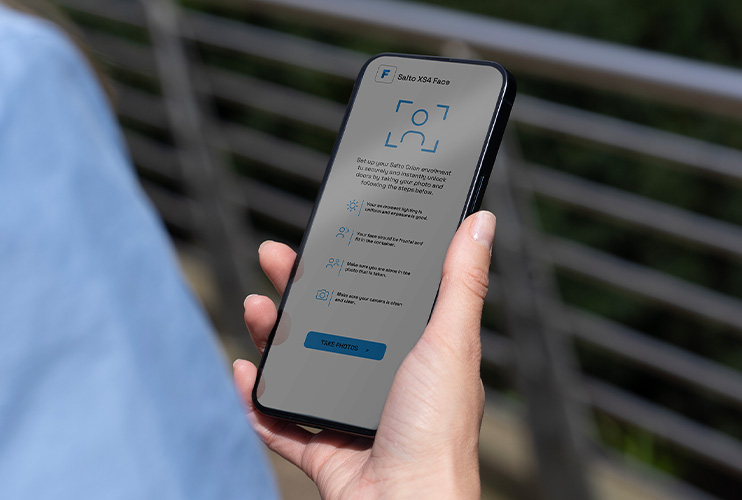
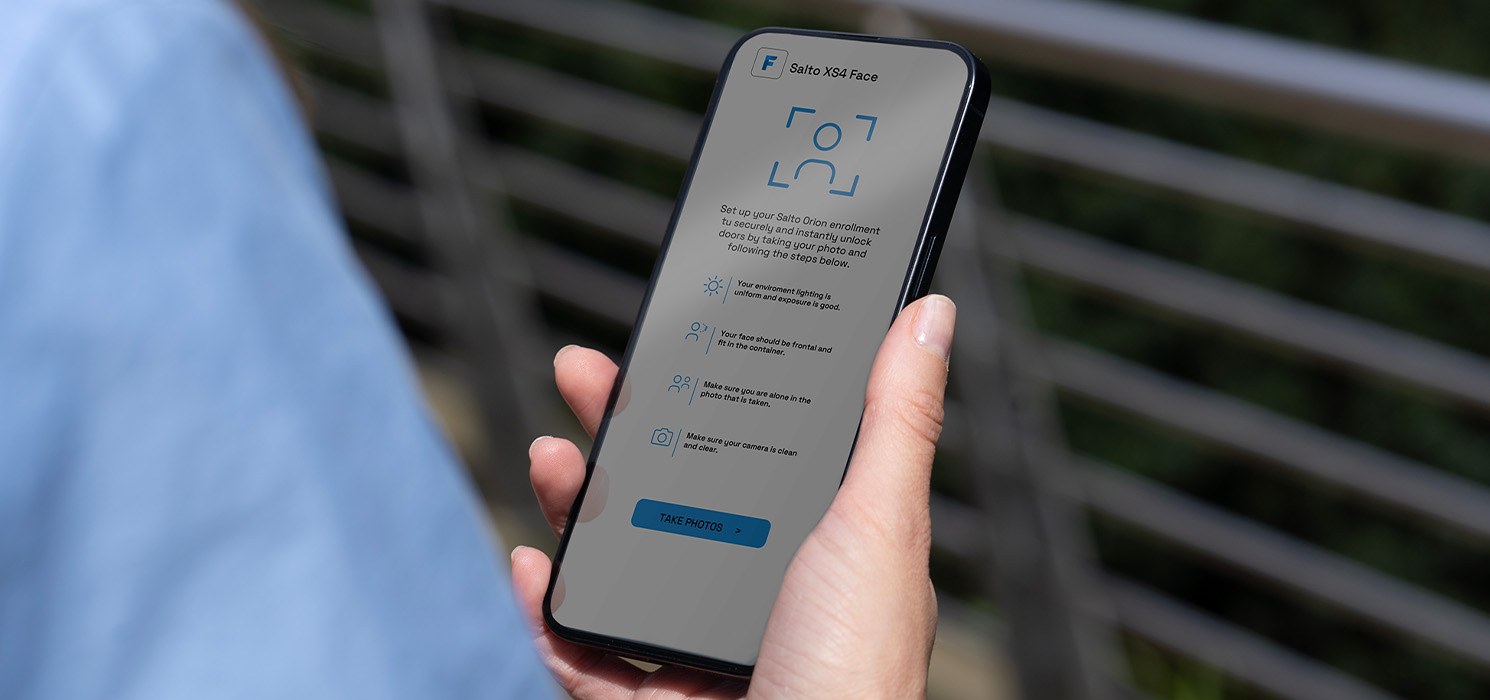
Sustainability at the core: Salto’s XS4 Original+ EPD supports green building initiatives
The XS4 Original+ series, Salto’s flagship solutions range, achieves EPD (Environmental Product Declaration) to set new industry standards.
At Salto, we see sustainability as more than an objective; it’s part of our commitment to people and planet, and a value embedded across the entire SALTO WECOSYSTEM. Each innovative product is an opportunity to reduce emissions and drive environmentally responsible practices — from the electricity used in our manufacturing facilities to product design, the materials we use, and the shipping methods we employ.
This philosophy has helped us reach a new milestone. Recently, Salto received an Environmental Product Declaration (EPD) for our XS4 Original+ smart electronic locking range, specifically for European and Scandinavian narrow models.
This accomplishment showcases our dedication to transparency and improved environmental outcomes. Furthermore, it sets a benchmark for sustainable design in the access control industry.
What is an EPD?
An Environmental Product Declaration – EPD – is an independently verified document that provides detailed information about a product's environmental impact throughout its lifecycle. From raw material extraction and production to end-of-life disposal, the EPD presents a clear and comprehensive overview of our XS4 Original+ series’ environmental performance.
This product declaration is an invaluable tool for decision-makers in the construction sector, including architects, engineers, designers, builders, and developers. EPDs help professionals select building materials that contribute to resource-saving and environmentally friendly construction practices by providing a transparent account of a product's ecological footprint. Choosing products with verified EPDs also ensures compliance with green building standards, further enhancing the sustainability profile of their projects.
Buildings account for a significant share of global energy consumption and greenhouse gas emissions. Consequently, EPDs have become essential in the construction and real estate sectors. They empower industry professionals to make more informed, environmentally conscious choices, aligning with global efforts to combat climate change.
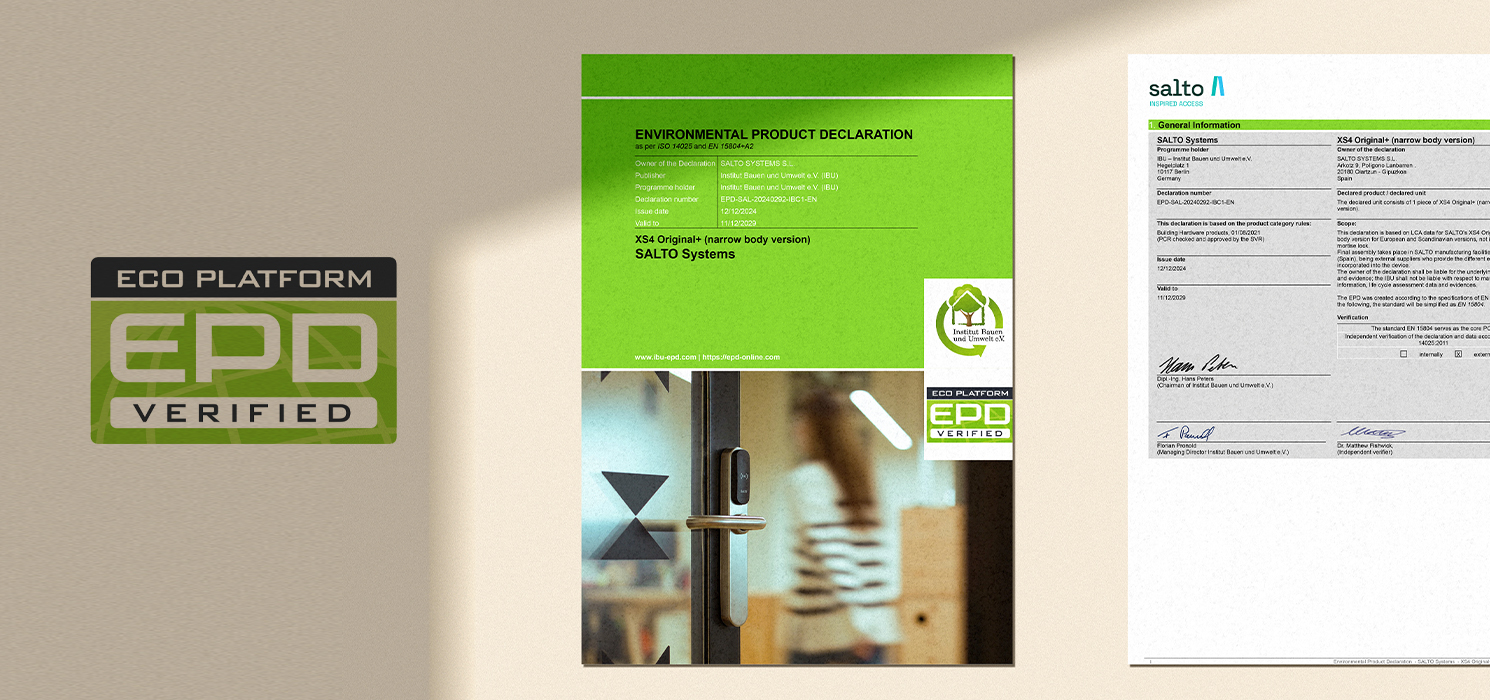
Innovation in the XS4 Original+
The XS4 Original+ is Salto’s flagship smart solutions range. These devices are designed with cutting-edge access technology, improving security and helping build safer, smarter, and more sustainable cities. Achieving an EPD for both European and Scandinavian narrow models reflects the high-level attention to detail, stylish design, and quality manufacturing Salto has become synonymous with.
By combining advanced technology with sleek, modern aesthetics, the XS4 Original+ series caters to the needs of diverse sectors, including residential, commercial, hospitality, education, healthcare, and workspaces. The product line boasts a wide range of models in various finishes, allowing these devices to blend seamlessly into any design. They offer extensive functionality, such as wireless connectivity, enhanced coverage, optimised performance, and keyless experiences. They are also wire-free, easy to install and retrofit, and compatible with different door hardware and mortise locks.
The XS4 Original+ series delivers unparalleled security, convenience, and energy efficiency, making it the right choice for sustainability-conscious consumers and businesses alike.
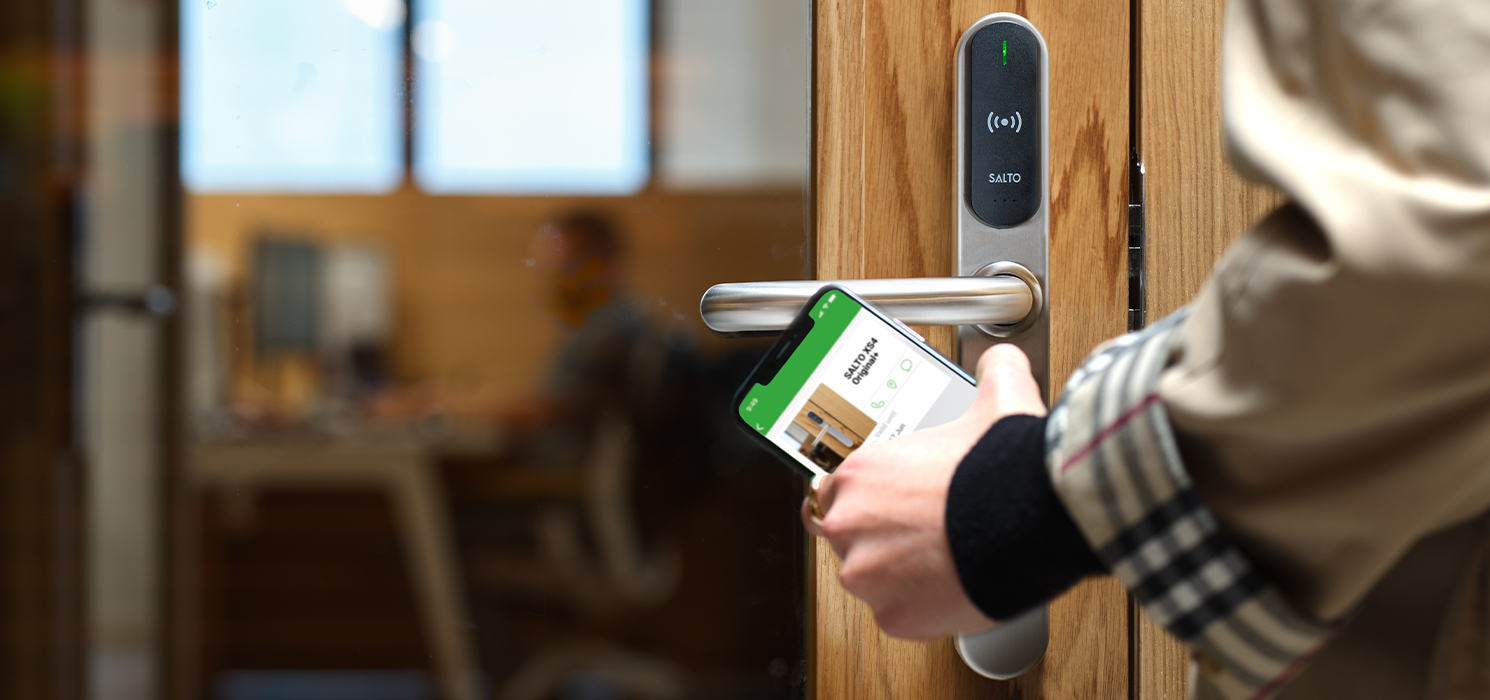
Meeting rigorous EPD standards
The XS4 Original+ series has undergone extensive testing and certification to ensure compliance with stringent environmental and safety regulations. The EPD assessment takes material sourcing, energy efficiency, and manufacturing optimisation into consideration. This ensures each product meets the highest quality control standards while contributing to a sustainable future.
Salto and sustainability
Salto’s efforts to protect the environment extend far beyond achieving this EPD. We work tirelessly to minimise our carbon footprint, adopting sustainable practices at every stage of the product life cycle.
Our products are crafted with durability in mind, and we prioritise using long-lasting materials that are recyclable at the end of their life. Additionally, we provide repair services via a certified partner network, extending the lifecycle of our solutions and reducing waste. Meanwhile, our eco-friendly packaging is 100% recycled and FSC-certified, and our transition to renewable and low-carbon shipping options continues to reduce emissions associated with product transport.
More broadly, the SALTO WECOSYSTEM aims to achieve net-zero emissions across all operations as part of our 2023-2030 Climate Change Policy.
Redefining resource-efficient construction
EPD-product declarations like the XS4 Original+ forms the basis for evaluating and improving the environmental footprint of modern buildings. With detailed data at their disposal, building professionals can assess the impact of incorporating Salto’s smart locking solutions into their designs. This level of insight supports the development of secure, technologically advanced buildings that align with environmental conservation principles.
Our XS4 Original+ range is designed to provide more than best-in-class smart access control. Its sustainable credentials allow project planners to optimise building performance in terms of both security and environmental impact. This transparency not only promotes compliance with green building standards, but also inspires comradery among stakeholders striving to build a more sustainable future – together.

Shaping the future of sustainable buildings
Salto’s pursuit of EPD is part of our broader strategy to spearhead eco-friendly innovation. From minimising material waste to optimising production processes, sustainability guides everything we do. This holistic approach allows us to meet the needs of forward-thinking decision-makers looking to integrate smart, sustainable solutions into their projects.
The XS4 Original+ range exemplifies our belief that technological innovation and environmental responsibility work as one. This achievement isn’t just a win for Salto, but for the entire access control and construction industries. It shows how sustainable architecture can integrate seamlessly with advanced technology, providing a blueprint for sustainable and resource-efficient buildings.
By selecting products like the XS4 Original+, built environment professionals can ensure their projects align with environmental standards while delivering world-class security solutions. Together, we can redefine what it means to build sustainably – one innovative project at a time.
Do you have a question about the Salto products sustainability policies? Contact us, or visit our social media pages for more information on all things Salto.
Follow us on Instagram and LinkedIn for the latest product features, updates, and news from the industry

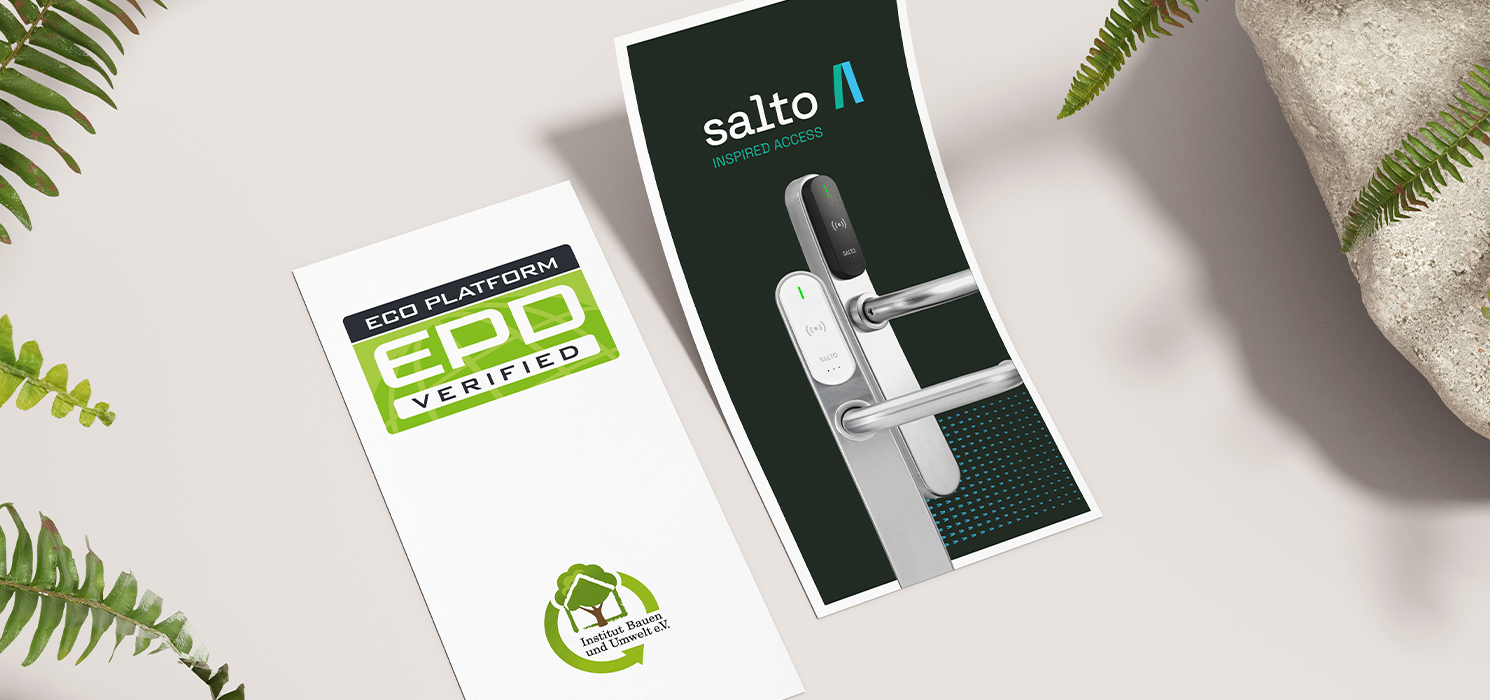
Revolutionizing Access with Smart Door Intercom Solutions
Explore XS4 Com iGO, the next-generation door intercom system designed to seamlessly blend with the digital lifestyle of today's users.
Explore XS4 Com iGO, the next-generation door intercom system designed to seamlessly blend with the digital lifestyle of today's users. By combining sophisticated technology with user-friendly features, XS4 Com iGO transforms the way we manage access in various environments, from homes to workspaces.
The evolution of the access control system
Intercoms have come a long way, transitioning from audio-based only to modern, multifunctional systems. Initially designed to announce a visitor's arrival, early intercoms were about basic communication, speaking through a panel to verify and decide on granting access.
As technology evolved, so did intercoms. The integration of video capabilities was a critical development, allowing for visual confirmation of guests, enhancing both security and convenience.
Today, the evolution continues with intercom systems that integrate seamlessly into our (digital) lives. It's not just about seeing or speaking with visitors anymore but about creating a connected, secure, and convenient (w)ecosystem. They offer advanced features such as remote access control, history logs, access notifications and integration capabilities, reflecting our expectations for technology that provides not just security, but also comfort and smart connectivity.
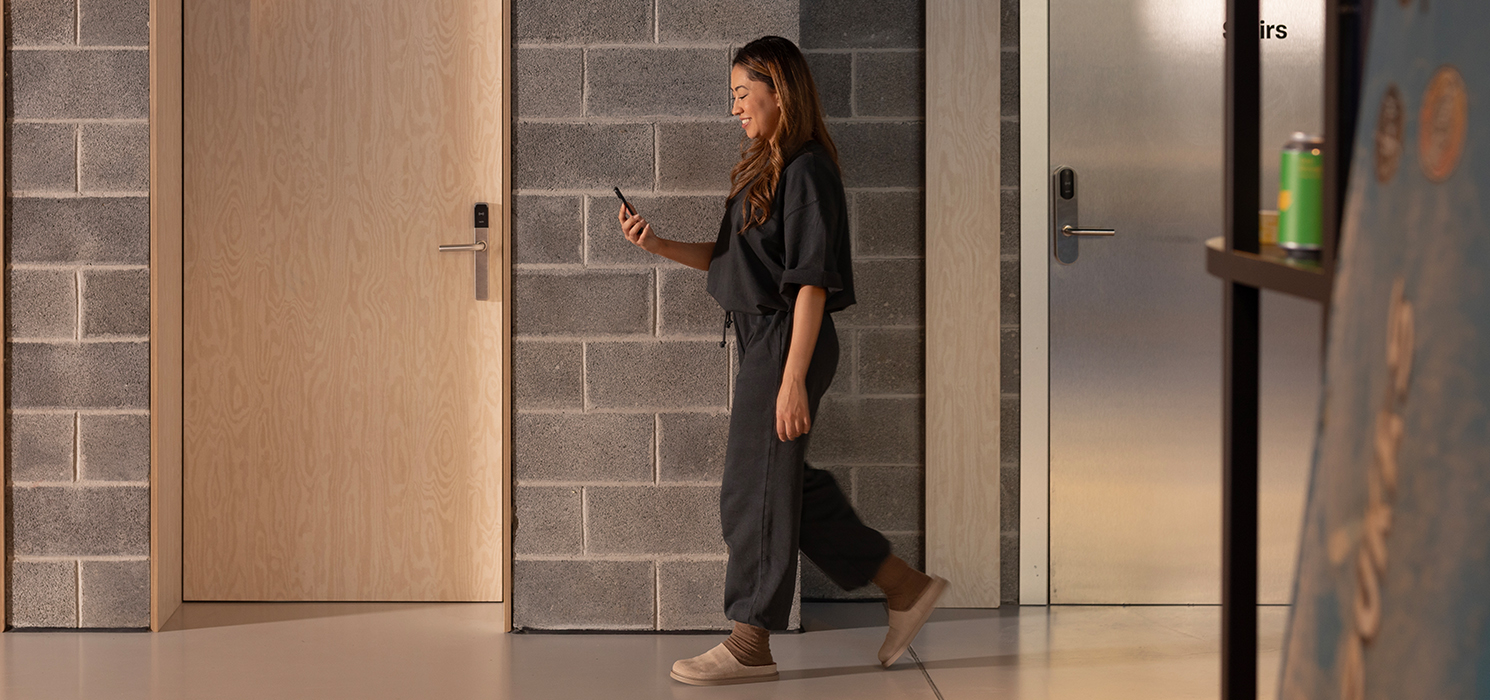
In this context of digital advancement, solutions like Salto’s XS4 Com iGO represent the next step (advance) in intercom technology,—designed for users who prioritize seamless and integrated communication.
The problem with current systems
While modern intercom systems have embraced video capabilities to allow visual verification of visitors, enhancing both security and convenience, challenges in their everyday use remain.
One of the challenges is the need to physically approach the intercom for every visitor—whether at home or in the office, which interrupts work and personal time. This routine becomes particularly inconvenient when it involves unnecessary walking, a big contrast to the seamless interactions we've become used to with modern technology.
Furthermore, these systems often lack the flexibility to adjust settings based on the user's immediate needs, such as turning off the ringtone during a meeting or nap time, further showing the need for an intercom solution that adapts to the user's lifestyle rather than controlling it. All this reveals a gap in a design that should be more user than product centric.
In response to these challenges, XS4 Com door intercom platform appears as a thoughtfully designed solution. It represents a step forward by providing a system that marries the convenience of modern technology with simplicity needed for everyday life.
Introducing XS4 Com
In the evolution of access management, XS4 Com iGO introduces a new approach that aligns with the modern user’s digital-first lifestyle. At its heart, the system redefines visitor management by employing QR code and NFC technology to connect remotely with hosts, facility managers, concierges, and other designated individuals at the door, a simple yet effective solution that caters to both security and convenience.
Key features include:
- Streamlined Visitor Access: Visitors can initiate contact by scanning a QR code or tapping their NFC-enabled phone on an iGO plate.
- Two-Way Verification: Supports both video and audio interactions, allowing users to confirm visitor identity visually before granting access.
- Geofencing Capability: Geofencing ensures calls are only made when visitors are near the property, enhancing security.
- User Control Options: Users have the flexibility to accept or decline calls based on their convenience.
- Mobile Management: Access management is fully controllable via the user’s smartphone.
- Remote door control: User can open your doors from anywhere via the XS4 Com app
When visitors arrive, they are presented with a streamlined option to initiate contact: scanning XS4 Com iGO’s QR code or tapping it with their NFC-enabled phone. This action launches a web interface on the visitor’s device, displaying a digital phonebook from which they can select the intended contact. Upon selection, a notification is instantly sent to the users’s XS4 Com iGO app, prompting a video call request.
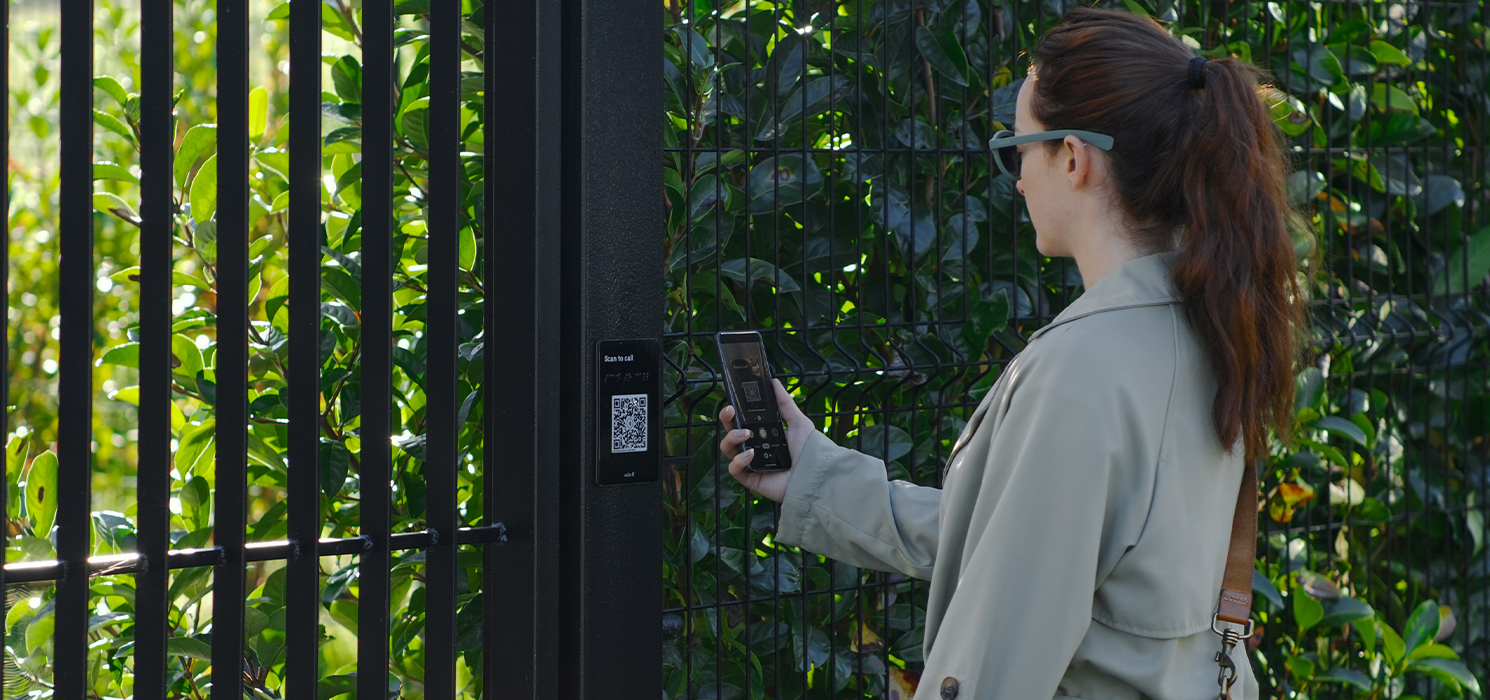
At this point, users have the flexibility to manage the interaction directly from their app. They can choose to accept the call, which activates a secure video communication allowing them to visually confirm the visitor's identity before granting access. Alternatively, if it’s not a convenient time, tenants can decline the call with just a tap, maintaining their privacy and controlling access according to their current availability. This dual interaction model not only streamlines the entry process but also significantly enhances security and verification measures, making the entire experience seamless and secure.

Furthermore, XS4 Com iGO employs geofencing to ensure that calls can only be initiated when visitors are physically near the property, with customizable distance settings managed by the site manager. For added security, visitors are required to have their camera on during the call, while tenants have the discretion to enable or disable their cameras, ensuring privacy and control.
XS4 Com iGO simplifies access management, making it easily controllable from anywhere through its app. This not only elevates security but integrates effortlessly with daily life, combining convenience with peace of mind. Its adaptability shines in both residential and commercial settings, enhancing spaces with smart technology without the burden of complex setups.
Marc Handels, Chief Technology Innovation Officer and Co-Founder at Salto, highlights the transformative nature of this product:

"With XS4 Com iGO, we are revolutionizing the way people interact with intercom systems by combining cutting-edge technology with intuitive design. iGO allows for the installation of an intercom almost anywhere, at a fraction of the cost of a traditional unit. This new platform empowers users with unparalleled convenience and security, ensuring that managing and using access can be as seamless and smart as the modern world demands."
XS4 Com Smart Access Ecosystem
XS4 Com iGO’s flexibility makes it suitable for a wide range of settings. For instance, in coworking spaces, it can manage access without disrupting the collaborative atmosphere, allowing easy and secure entry for members. In boutique hotels, the system offers a streamlined, hassle-free check-in process that enhances the overall guest experience, reflecting the high standards of service these hotels try to maintain. In residential complexes, XS4 Com iGO increases security by ensuring that only verified individuals can access the premises, providing peace of mind for residents. These applications demonstrate how XS4 Com iGO adapts to various needs, extendable to any space prioritizing secure and convenient access solutions
A defining feature of XS4 Com iGO lies in its ability to integrate with existing Salto smart access platforms like Salto KS and Salto Homelok, bringing a new level of functionality to access management. This integration allows residents and office workers, through the same XS4 Com iGO app used for video calls, to remotely open doors. It's an effortless extension of the system's capabilities, ensuring that managing access is as intuitive as answering a call.
This feature significantly benefits users by combining the convenience of visual verification with the practicality of remote door operation. Whether granting access to a delivery person or welcoming a guest, users enjoy a unified experience within a single app interface, streamlining the interaction.

As we've navigated the transition from traditional intercoms to the innovative XS4 Com iGO, it's clear this system offers a new approach to access management, suited for today's digital lifestyle.
It serves efficiently as a standalone system but also offers smooth integrations with Salto's existing products, addressing different needs for modern access management.
With installation managed by certified partners, XS4 Com iGO promises a straightforward setup, ensuring users can quickly benefit from its advanced features.
For those curious about tailoring XS4 Com to their unique building, Salto is ready to provide further details and support.
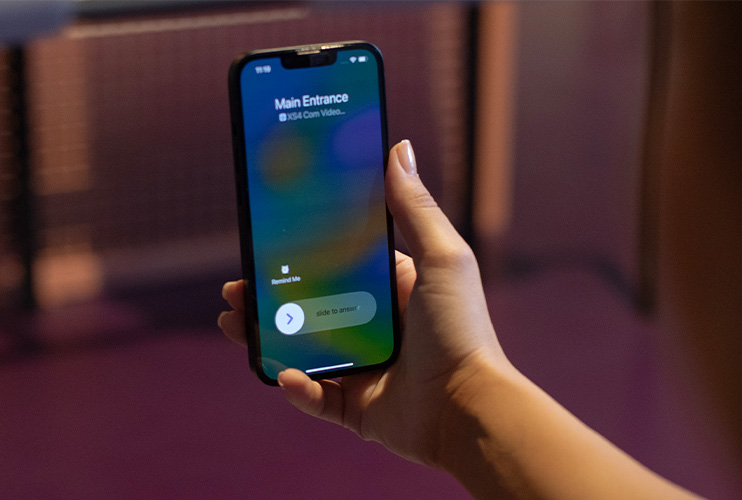
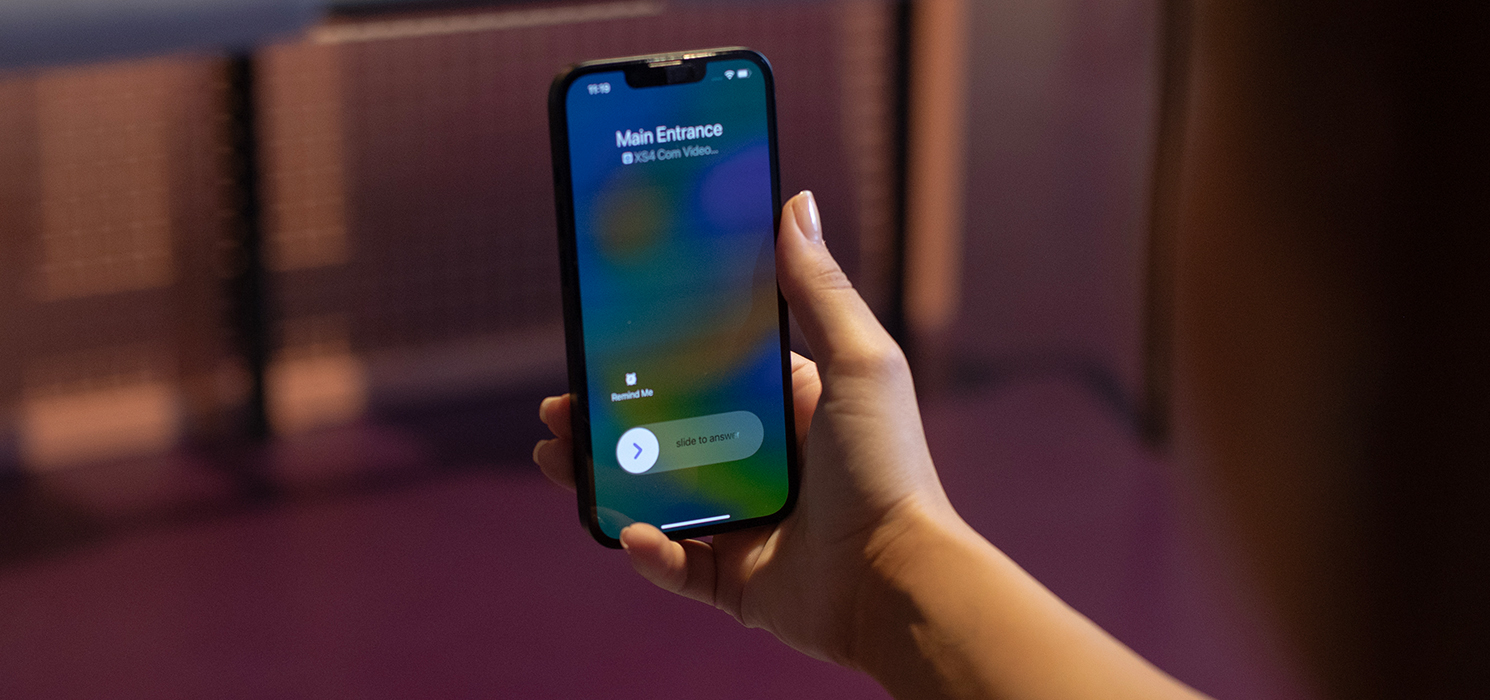
What you need to know about the EU’s new NIS 2 Directive and DORA – and how Salto fits in
Keeping up with regulatory changes helps organisations stay safe in a rapidly evolving cybersecurity landscape.
Keeping up with regulatory changes helps organisations stay safe in a rapidly evolving cybersecurity landscape.
In the realm of cybersecurity, safeguarding critical infrastructure and ensuring operational resilience have never been more essential. Recognising the growing complexity of cyber threats, the European Union has introduced legislative measures like the Network and Information Security Directive and the Digital Operational Resilience Act to establish stringent cybersecurity standards. Salto’s smart access and identity management solutions are designed to support organisations in achieving compliance with these vital frameworks, offering robust security and operational continuity.
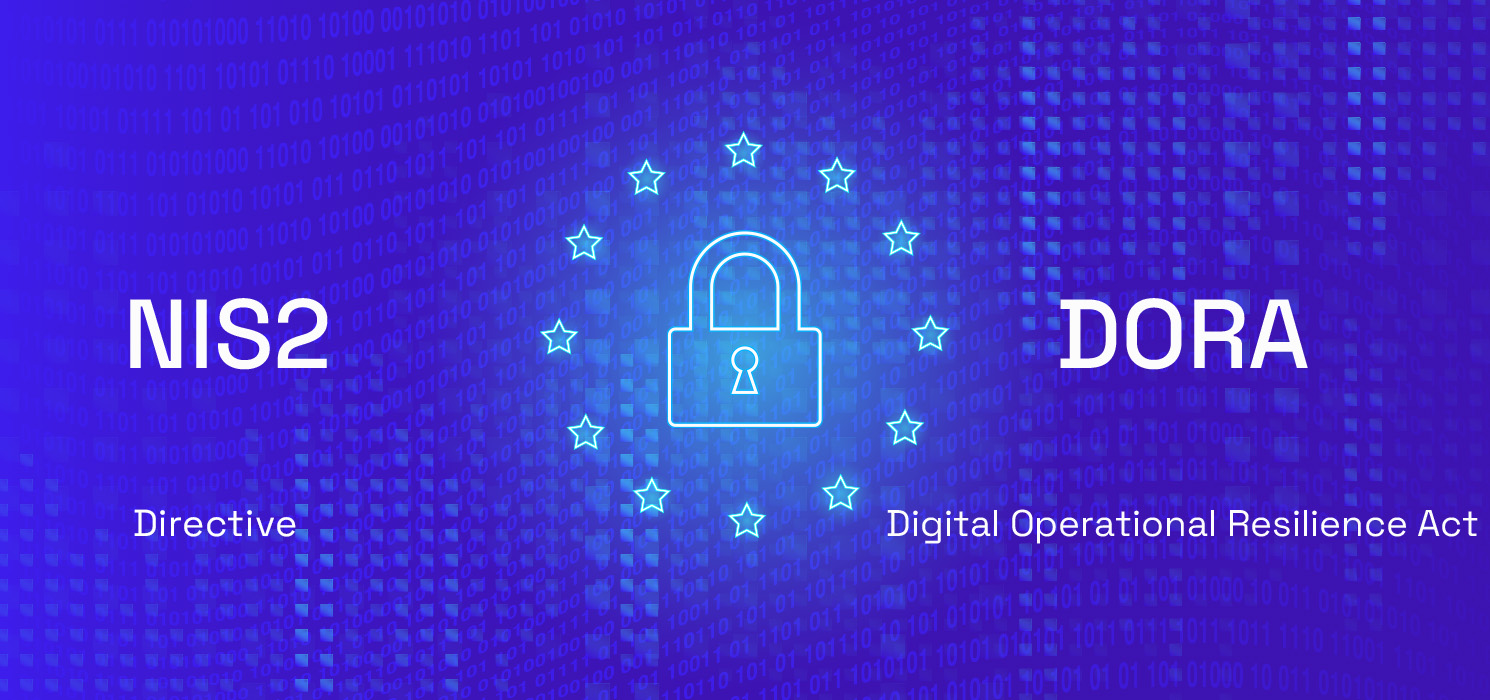
Here is a comprehensive guide to navigating these directives and ensuring your organisation's cybersecurity readiness.
Understanding the NIS 2 Directive
The Network and Information Security Directive (NIS 2), effective as of October 18th, sets a high common level of cybersecurity for companies operating across the EU. Expanding on its predecessor, the NIS Directive, it emphasises enhanced security measures for network and information systems, as well as improved incident reporting protocols.
NIS 2 mandates that European companies which fulfill certain conditions adopt technical, operational, and organisational measures to manage cybersecurity risks effectively. The Directive covers companies within 18 sectors, including energy and critical infrastructures, finance, healthcare, manufacturing facilities, and public infrastructure.
Conducting a comprehensive risk assessment is the first step toward aligning processes with the requirements of NIS 2. This involves identifying and evaluating potential cyber threats that could impact business operations. Other key aspects of NIS 2 compliance include:
- Identity management, authentication, and access: This requirement encompasses a broader set of entities, including suppliers, with varying size thresholds.
- Data security: This element imposes stringent security measures to mitigate risks and protect systems from cyber threats.
- Quick detection and response to cyber incidents: NIS 2 calls for timely reporting of cybersecurity incidents to designated authorities.
- Continuous security monitoring: Companies are required to ensure security standards are upheld at all times.
What is DORA?
The Digital Operational Resilience Act (DORA), effective from January 2025, focuses on strengthening IT security within the financial sector. Covering 20 types of financial entities – including banks, insurance firms, and ICT third-party service providers – DORA harmonises operational resilience rules to ensure that the sector can withstand severe operational disruptions.
DORA’s scope extends beyond mere protection. It highlights the need for consistent operational continuity and preparedness across financial institutions and their IT service providers. Key aspects of DORA compliance include:
- ICT risk management: DORA requires institutions to prepare comprehensive resilience testing programs for all digital operations.
- Incident reporting: This feature compels companies to report ICT incidents affecting operations to financial authorities and all affected parties.
- Third-party risk management: With this aspect, organisations must develop a regularly updated strategy for minimising third-party risk, including contractual agreements and monitoring.
- Information sharing: Entities operating in the financial sector must transparently share information about vulnerabilities and cyber threats.

Guarantee NIS 2 and DORA compliance with Salto smart solutions
Salto’s wide-ranging access control solutions secure environments from offices to data centers and critical infrastructure. As such, we’re uniquely positioned to help our clients and partners meet NIS 2 and DORA standards. Salto smart access and identity management solutions provide the following capabilities aligned with NIS 2 and DORA requirements to simplify the journey to compliance:
- Enhanced access control: Delivering advanced solutions for secure sensitive areas ensures that only authorised personnel gain entry. Organisations can restrict access to specific zones, define time-based schedules, and use various access methods, including smart cards and fobs, mobile access, keypads, and biometric authentication.
- Salto’s ID Visitor Management solution: This enhances access control systems for NIS 2 compliance, boosting security and accountability for all on-site visitors. Providing digital registration allows visitors to access authorised areas only, supported by features like real-time notifications and personalised visitor badges.
- Comprehensive audit trails: To meet NIS 2 and DORA requirements, organisations must maintain detailed records of access events. Our smart solutions automatically generate thorough logs and audit trails, giving your company a powerful tracking system that records who accessed specific doors and at what times. This reinforces compliance and accountability in the event of incidents.
- Resilient access control and state-of-the-art electronics locking solutions: Reflecting DORA’s emphasis on operational continuity, Salto’s intelligent access control solutions keep critical access points secure and functional, even during power outages or network failures. This reliability enables your organisation to maintain security seamlessly through unexpected disruptions.
- Multi-factor authentication (MFA): This technology provides an added layer of security by necessitating multiple verification steps beyond traditional passwords. Salto’s smart access solutions integrate MFA protocols into existing security systems, fortifying your organisations’ defenses against cyber threats.
- End-to-end authentication solutions: Ensure secure access to applications, networks, and access control management platforms and operators. Salto’s solutions deliver secure credentials on physical and mobile devices, guaranteeing seamless user authentication.

Get ready for NIS 2 and DORA: Securing tomorrow
Security is at the core of Salto’s operations. As one of the world’s leading access control providers, we embed privacy and safety into every aspect of our products and services. In the face of evolving cyber threats and regulatory demands, we’re dedicated to ensuring that our smart access technologies and solutions comply with these heightened security standards.
Cultivating a culture of continuous security improvement is key to maintaining NIS 2 and DORA compliance. At Salto, we proactively embrace NIS 2 and DORA requirements to develop cutting-edge smart access solutions you can rely on. By leveraging our innovative solutions, organisations can fortify their cybersecurity posture and navigate the complex landscape with confidence. Download a copy of Salto’s NIS 2 Directive and DORA Compliance guide today, and start propelling your company toward robust security industry compliance and operational resilience.
Download a copy of Salto’s NIS 2 Directive and DORA Compliance guide today, and start propelling your company toward robust security industry compliance and operational resilience.


Physical security and access control. Everything you need to know
Access control is a critical element of physical security. Here’s what you need to know.
Keyless entry systems have become increasingly popular for commercial and corporate buildings. From working, retail and banking spaces to industrial and manufacturing facilities, government and public sector installations, and airports and other transportation hubs – these systems have become a critical element of physical security.
Access control fast-tracks the digital transformation of these facilities, helping them become smarter, more secure, and more efficient. By replacing traditional metal keys with intelligent keyless systems and ID management solutions, users can access a building or office using smart credentials like mobile digital keys, PIN codes, or face recognition.
Physical vs keyless access control
A cohesive access control system goes a long way in securing your organisation. Whether you’re onboarding new employees, a new guest or handling temporary visitor requests, it offers a modern approach to secure access while optimising operations that address your business needs and today’s challenges.
However, the smart functionality of keyless access control systems provides many benefits for commercial, hospitality, educational facilities, residential, critical infrastructures or working spaces.
First and foremost, keyless entry is convenient, eliminating the hassle of carrying and tracking physical keys. Users and visitors can enter with a keycard or smartphone through smart digital identity credentials or facial recognition technology. What’s more, access permission can be easily terminated when staff, guests, residents, or visitors leave or credentials are lost or stolen. The administrative time spent issuing, retrieving, and managing mechanical keys is greatly reduced, improving overall user experience and boosting operational efficiency.
Just as importantly, keyless entry guarantees enhanced protection. Security doesn’t stop at the door – nor should your access control. Combining access control and digital technologies delivers solutions that protect your people and assets. No need to worry about lost or stolen keys, or unauthorised copies being made. Access rights can be granted and revoked instantly, giving system administrators complete control. Many keyless systems also provide audit trails showing who entered which door and when, boosting transparency and peace of mind for not just building owners and managers, but staff and visitors too.
With keyless physical access management protocols in place, system operators enjoy the flexibility of configuring access permissions as required. Physical access control can be managed around employees’ schedules, seniority, or access needs based on their hours or specific roles.
Alternatively, keyless systems can offer blanket security for restricted areas or calendar-related events; entry can be restricted to certain days or times, for example. With the right keyless solution, administrators can design custom access control procedures, ensuring total physical access control over the premises.
Physical security and access control: what you need to know
While the keys used for traditional keyed locks can be stolen or copied without authorisation, or simply lost or poorly organised, smart keyless entry systems have no such issues:
- Access rights are configured through an all-inclusive access management software.
- Operators can grant or revoke access rights instantly to ensure only current employees, authorised visitors, and service providers have access – and only to permitted areas and periods of time.
- Expand your reach with greater visibility to all areas of your building, delivering a level of security you never thought possible.
- Prevent unwanted access from former staff or uninvited guests, providing a clear, real-time picture of who is in the building and where at any given time.
Gone are the days of losing sleep over missing keys or unauthorised copies. Keyless entry delivers robust access control overall, with integration that lets businesses manage access permissions with precision. Access can even be traced back to a specific credential to identify who entered a restricted area and at what time. Such transparency greatly improves accountability and security.

Why is access control important in physical security?
Physical access control in a smart building ecosystem provides high-level convenience. Staff members simply use keycards, fobs, or mobile credentials via their mobile phones to enter the premises securely, prompting a record of their access to be generated.
Doors equipped with smart locking technology unlock automatically when valid credentials are presented. As a result, access is fast and secure for authorised users – and considerably more difficult for unauthorised visitors.
The absence of physical keys also means there are no limitations on the number of users who can be granted entry on any day or at any given time. This means that you can manage access and physical identities easily, 24/7. New users will receive their credentials quickly through centralised access control software. And if a user leaves the building or a visitor checks out, their credentials are revoked instantly without having to retrieve physical keys – saving time and bolstering security.
The convenience factor is a major benefit of keyless entry for commercial buildings and offices, but there are many others:
Cost savings
Implementing a keyless entry system can lead to significant cost savings for office, commercial, and public buildings.
One major area of savings comes from reducing the expenses associated with copying and replacing missing physical keys. This is a common issue in traditional mechanical systems and requires taking copies from master keys or getting replacement keys for individual employees. Some keys have higher security standards, making them particularly expensive to copy; most have to come directly from the original supplier. Administrative charges associated with tracking staff keys and managing the key distribution process make it even more prohibitive.
Additional cost savings come from automating the access control system, which strengthens security policies while improving the flow of people within your facility. In the event of a security breach, smart keyless entry systems allow access permissions to be reconfigured and updated remotely, rather than having building owners change locks and keys on multiple doors.
Installing keyless access also increases efficiency. Improved workflow processes mean spending less time on provisioning and managing user credentials and access rights. Compared to traditional lock-and-key setups, keyless systems effectively pay for themselves over time through cost savings and improved operational efficiency.
Improved security
Keyless entry systems provide immense security advantages over traditional keyed locks. Some of the main benefits include:
- Audit trails: The detailed audit trails created by most electronic security access control systems show who entered which doors and when. This ensures accountability and allows system controllers to investigate any security breaches. Widespread knowledge that the system logs all access attempts, successful or otherwise, also deters misconduct.
- Restricted access: With a keyless system, you can restrict access to certain areas and set time-based access schedules. For example, you could allow the cleaning or part-time staff to enter only during working hours.
- Less reliance on physical keys: Centralised control and access visibility is a significant security upgrade from traditional physical keys, which fail to provide the same level of security, accountability, and convenience.
Integration and smart building ecosystem
Unify access control with the rest of your security system and achieve operational efficiencies, along with a comprehensive view of your building.
Flexible system infrastructure
Whether you’re looking for an on-premise, cloud-based, or hybrid access control solution, there is a wide range of access control infrastructure and flexible deployment options to fit your needs.
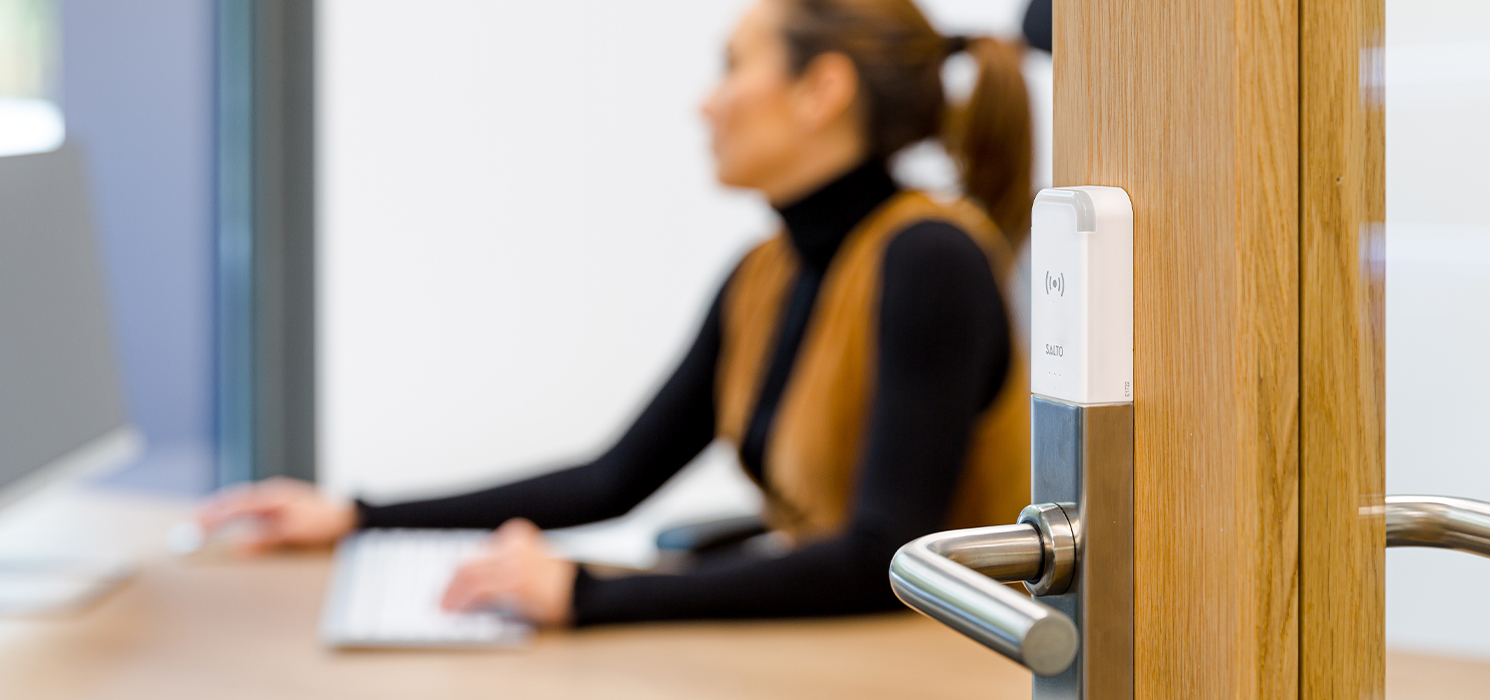
Which access control should you choose?
When evaluating keyless entry systems, it's important to consider factors like a building’s layout, operational challenges, existing infrastructure such as the access or visitor management setup, and integration with other systems. Examining its security policies could be beneficial too, as is identifying new ways to improve the user experience. The holistic view will make it easier to take control of your access management and building safety.
Keyless physical access control systems for offices and commercial buildings typically utilise one of four main technologies: biometrics, keypads, smart cards/fobs, or mobile access.
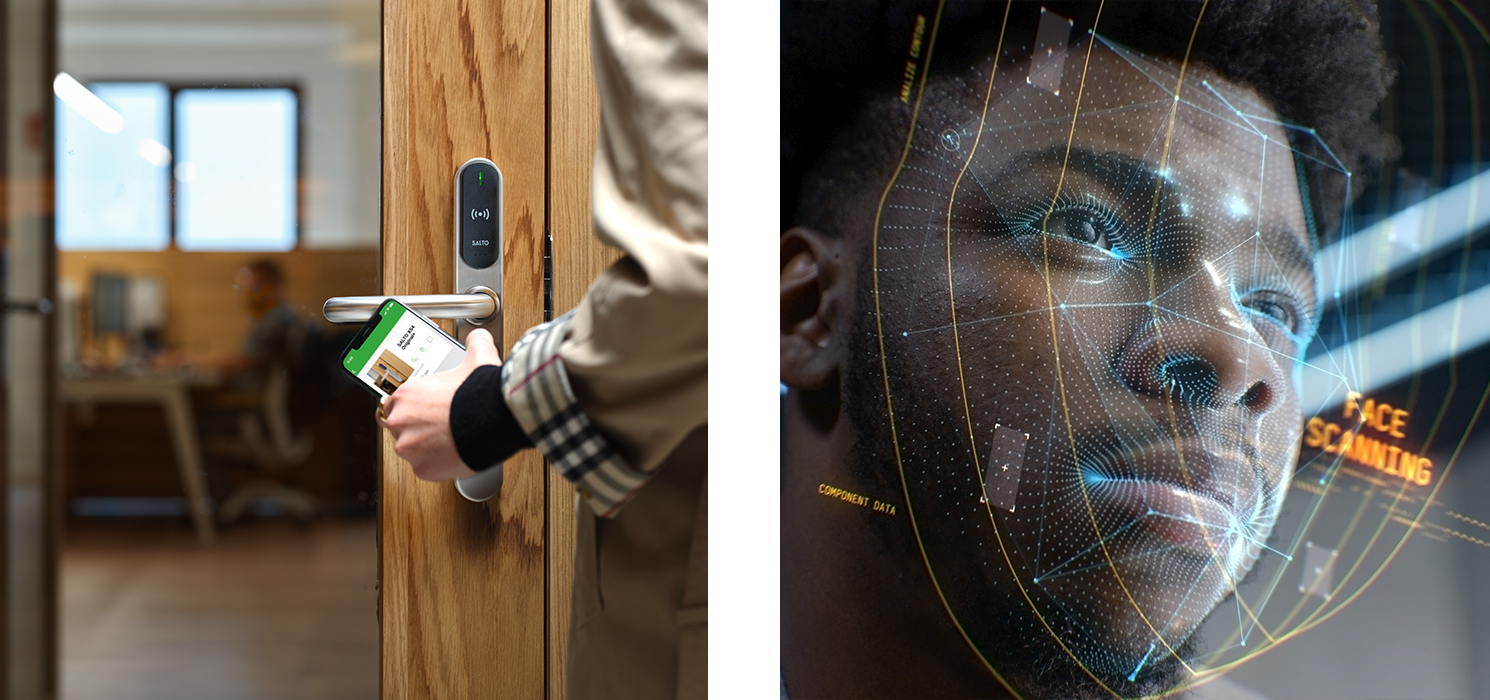
Smart credentials or badges
Smart cards and fobs use proximity technology to grant access. When the card or fob is tapped or waved near a reader, it locks or unlocks doors instantly. While this option is secure and convenient, it shares some drawbacks of traditional keys as cards and fobs can be lost, stolen, or shared without permission.
Mobile access and digital keys
With mobile access systems, users unlock doors via an app on their smartphone or other mobile device. This provides both security and convenience, allowing dynamic access control and creating audit trails. However, it obligates visitors and staff to have their mobile device with them at all times when entering or moving around within access-controlled areas.
Facial Recognition
Facial recognition systems identify individuals by their unique physical characteristics. This user authentication method uses facial recognition technology to create individualized and trusted facial credentials based on distinctive facial traits. By eliminating the need for traditional physical keycards, users can effortlessly gain access; this cutting-edge technology streamlines the access process and enhances security by eliminating the risk of lost or stolen credentials.
Pin and keypad door entry systems
Keypads are one of the most common forms of access control today. Keypad entry systems require users to enter a unique code or PIN to unlock doors.
Most modern access control systems use a keypad either as an additional identification method access option alongside another security layer to the access control system or access point necessary functionalities and two-factor authentication (2FA).
Visitors and ID Management
Managing visitors in any building or security-critical environment is an essential access control task.
Traditionally, visitor management has been handled through paper forms or guestbooks. However, requiring sign-in at reception or a security control point is labour-intensive for staff and time-consuming for visitors and contractors alike. It only takes just a few minutes at a time, but this adds up considerably when large numbers of people move in and out of a building. It can also drastically impact performance, customer experience, and operational efficiency.
In today's fast-paced world, larger or high-traffic buildings can experience huge volumes of individual access incidents. Having a robust entrance management solution and an equally secure, highly functional identification process is essential. The right keyless system provides efficient, flexible, and secure visitor access, keeping people moving and buildings safe while ensuring the best user experience.

Enjoy keyless convenience
Keyless entry systems offer numerous benefits for offices and commercial buildings looking to upgrade their access control:
- Avoid expensive cabling with wire-free access control technology to secure any entry point.
- Eliminate mechanical keys and simplify operations with precise, automated access permissions.
- Increase visibility with 24/7 real-time monitoring and access control management.
- Balance security, convenience, and user experience by managing access to multiple sites on a powerful, all-in-one platform.
- An access control system can perfectly function independently, but using it in conjunction with other systems can elevate the safety, security, and building management processes to an entirely new level.
Salto’s industry-leading innovations offer a broad selection of smart solutions to suit different business needs and operational requirements, from access control to ID visitor management and facial recognition to mobile access and integration capabilities. With proper planning and implementation, and the right keyless entry system in place, operators can significantly improve safety, security, convenience, and efficiency for commercial buildings, public facilities, hotels, critical infrastructures, residential properties, and work spaces.
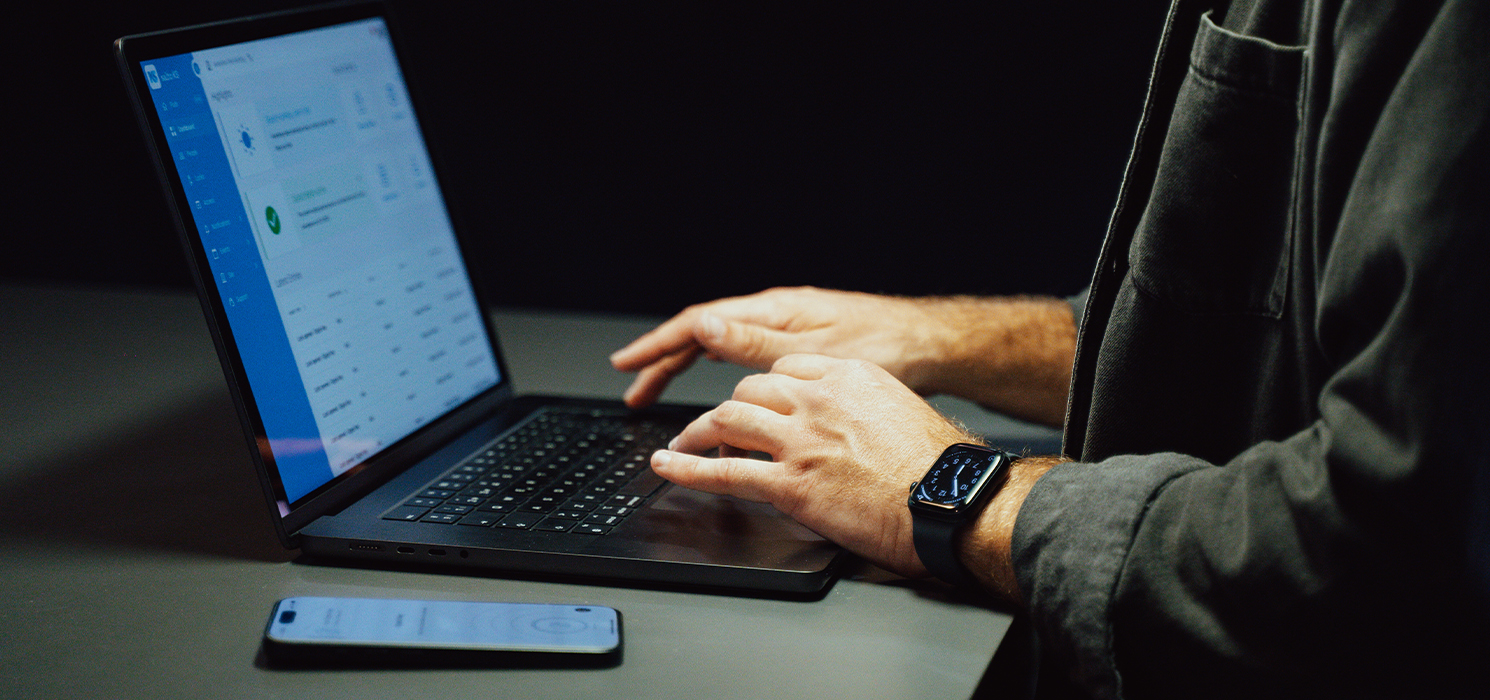
Can’t get enough? Click here to learn about Salto’s smart access solutions.
Follow Salto Systems on LinkedIn or Instagram to keep up with the latest news in the world of access control.
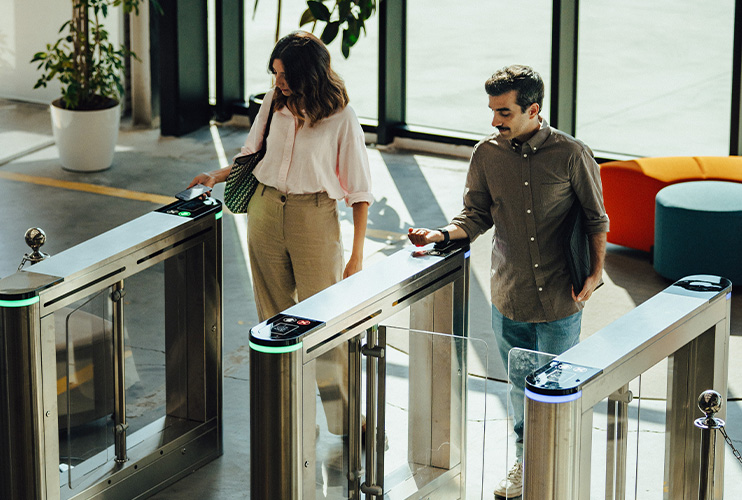
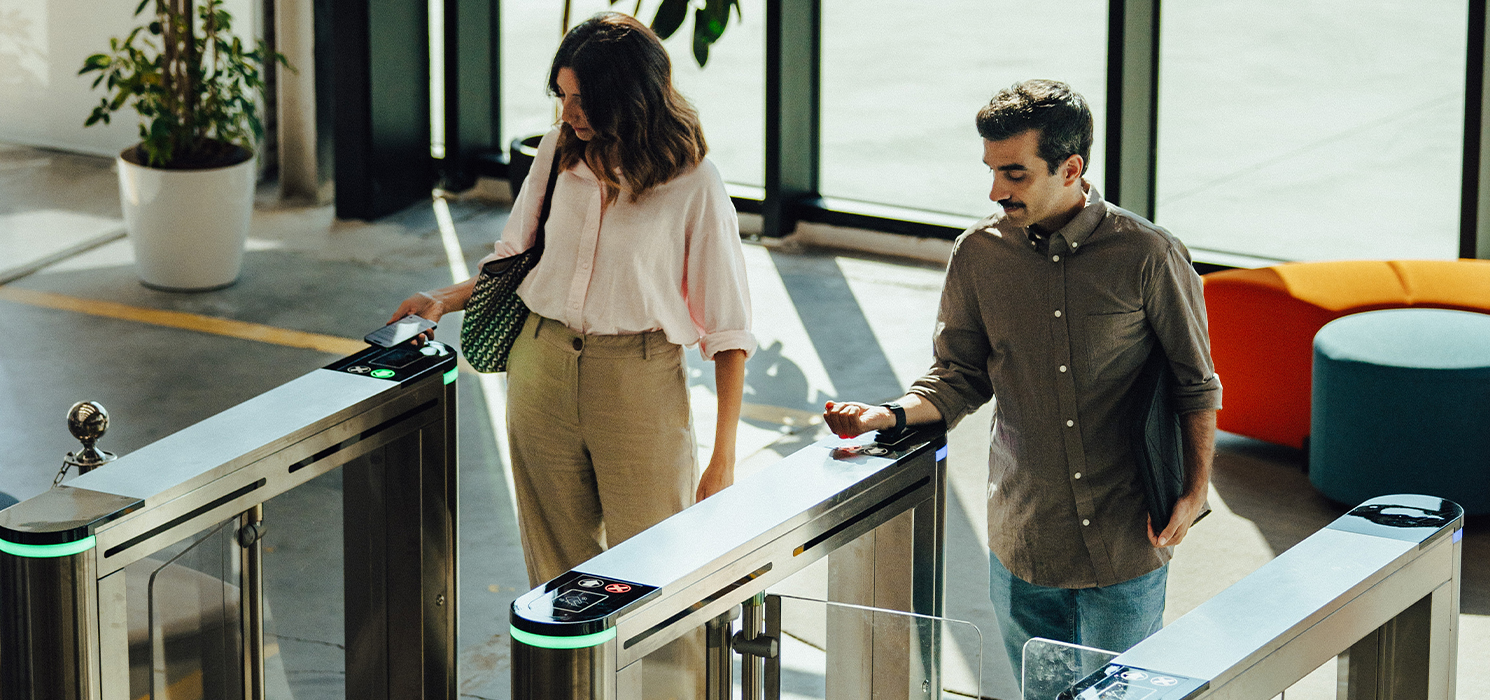
Enhancing security with improved incident notifications
Effective incident notification systems play a pivotal role in ensuring swift responses to potential security breaches, system malfunctions, and other critical even
In today's fast-paced and interconnected world, ensuring 24/7 security of physical spaces has never been more crucial. Effective incident notification systems play a pivotal role in ensuring swift responses to potential security breaches, system malfunctions, and other critical events.
Traditional incident notification systems often lead to information overload and significant delays in response. Operators and systems administrators manage access for facilities – changing access rights, creating new user profiles, and monitoring and securing sites – but at the same time, are bombarded with alerts, from minor issues such as low battery warnings to major security breaches. This not only overwhelms them but also increases the risk of critical alerts being missed. Additionally, the lack of flexibility and analysis in these systems means that security policies, anticipating actions, and preventing situations before they escalate into emergencies via lockdowns and push notifications of potential entry breaches might not effectively alert your response teams.
Whether it is an everyday situation or an emergency, being ready and aware is critical to ensuring you can quickly respond to whatever situations may arise. Having a comprehensive smart access control system and action plan that can be seamlessly activated ensures you respond fast and effectively to everyday incidents and emergency situations.
As the dynamics of building and facility management evolve, there is a need for more sophisticated incident notification systems to manage and optimize workflows to deliver a consistent incident response every time. Modern organizations and smart buildings require systems to advance digitization in their operations to offer rapid customization, delegate responsibilities effectively, and ensure that those responsible receive the information they need to act quickly.
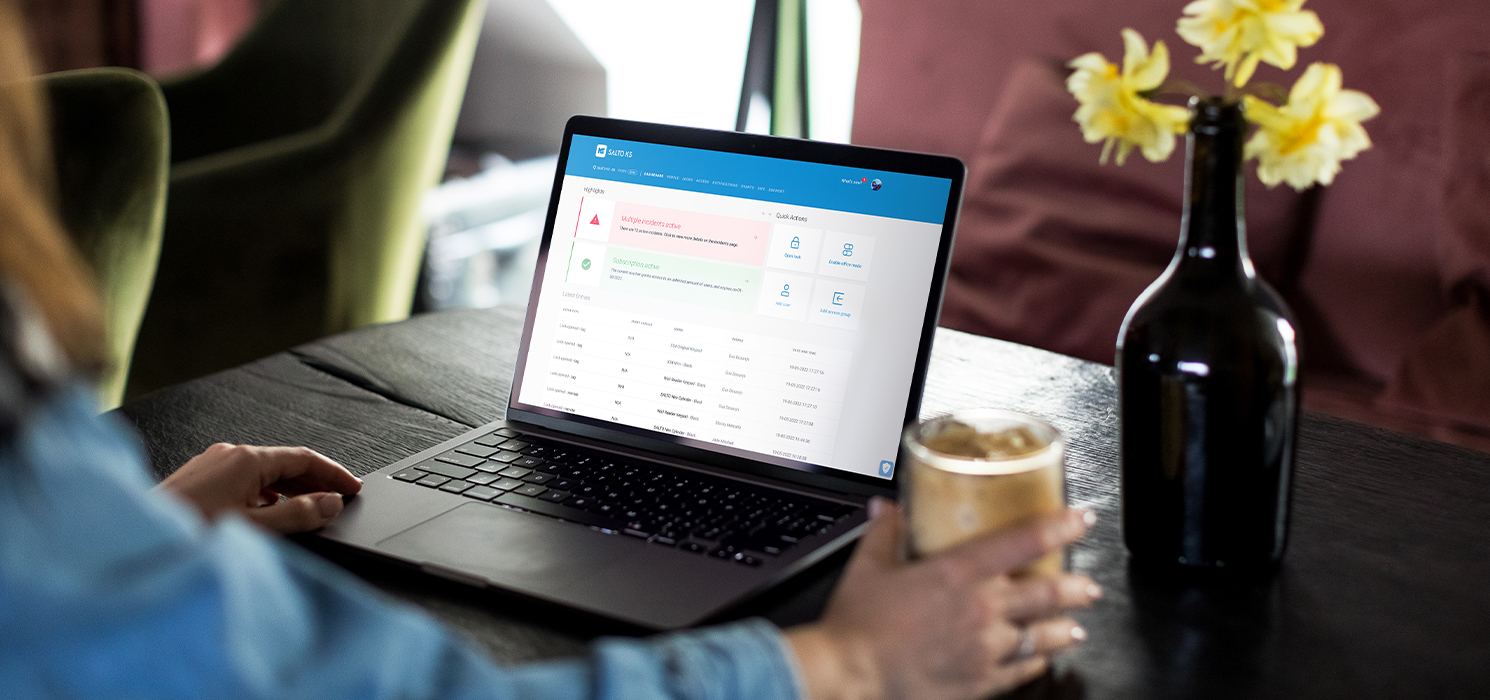
Physical access control that meets modern needs
Smarter and more secure access control optimizes operations. It addresses building needs and a more secure approach to managing security and incident response. Salto KS and Homelok cloud-based smart access solutions, as well as Salto Space the pioneering SVN data-on-card access control platform, have answered these challenges by introducing significant enhancements to their incident notification systems.
Salto KS: A new approach for managing incidents and notifications
Salto KS is a reliable cloud-based access control solution with unified software/hardware architecture that supports a broad spectrum of keyless access methods and integrates advanced security features within a fully remote and wireless cloud-based smart access management platform.
- Delegated responsibilities: The new system enables both Site Owners and Site Admins to receive and manage notifications based on their interests and role. This delegation helps distribute notifications more evenly and enhances operational efficiency. Previously visible only to Site Owners, notification settings can now be independently managed by Site Admins, although these settings are disabled by default and must be changed.
- Customization of alerts: Site Admins can now tailor the system to notify them about specific types of incidents, ensuring that each alert is relevant and actionable. Additionally, users can choose to receive notifications for specific locks, allowing for even more precise control over the security monitoring of access points.
- Flexible notification methods: Site Admins can choose to receive alerts through emails or push notifications through the Salto KS app, selecting the method that best fits their immediate needs.
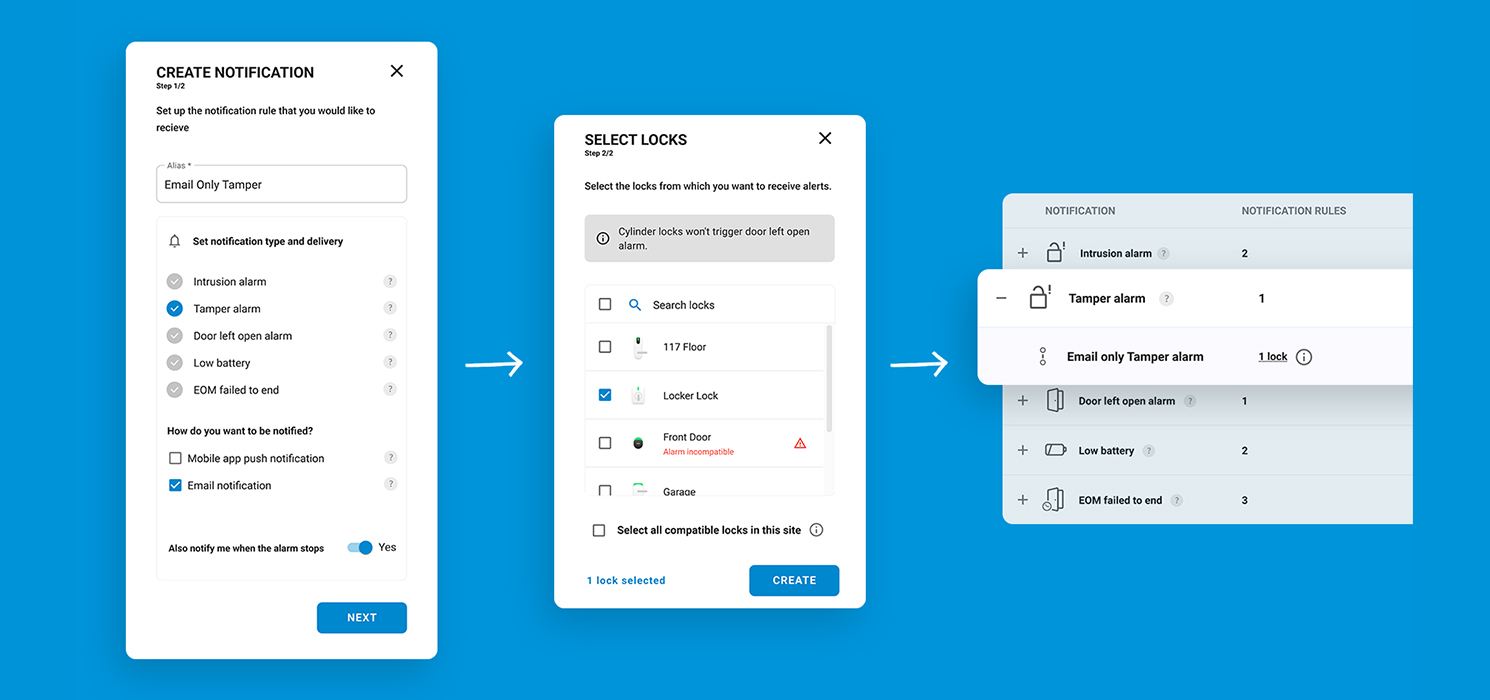
Salto Space: Physical access and incident management made easy
The Salto Space access control platform offers a comprehensive set of features for managing access and security, including the ability to configure alarm events to trigger specific actions in response to various scenarios.
By leveraging Salto Space’s access control management software alarm events feature, businesses and organizations can elevate incident notification and response mechanisms. The ability to configure specific actions for different scenarios, combined with the platform's user permissions and audit trail capabilities, empowers security staff and operators with the necessary tools to effectively manage access-related incidents.
- Smart lock connectivity: Detects the loss of connection to a lock, triggering notifications such as email alerts to relevant stakeholders. This proactive approach to monitoring access points ensures swift response to potential security breaches.
- Sensor signal control: Enables users to integrate sensor inputs with control unit (CU) outputs, allowing for the configuration of specific actions in response to sensor signals. In the demonstration, a physical button simulated a sensor signal, triggering an alarm event to control the action of a relay on the CU, in this case, a beeper. This level of control over sensor inputs and corresponding responses enhances the platform's incident notification capabilities.
- Door-triggered lockdown: Another highlight of the demonstration was the use of alarm events to enable a lockdown area when a certain door is opened. This feature is crucial for managing security incidents and ensuring rapid response to unauthorized access attempts.
- Online monitoring: The online monitoring functionality gives users the ability to monitor and control the real-time status of online access points. Additionally, it empowers users to execute actions on doors, such as activating Emergency Open or Emergency Close modes. With online access, the denylist can be automatically transmitted to doors, eliminating the need for manual updates at each individual door.
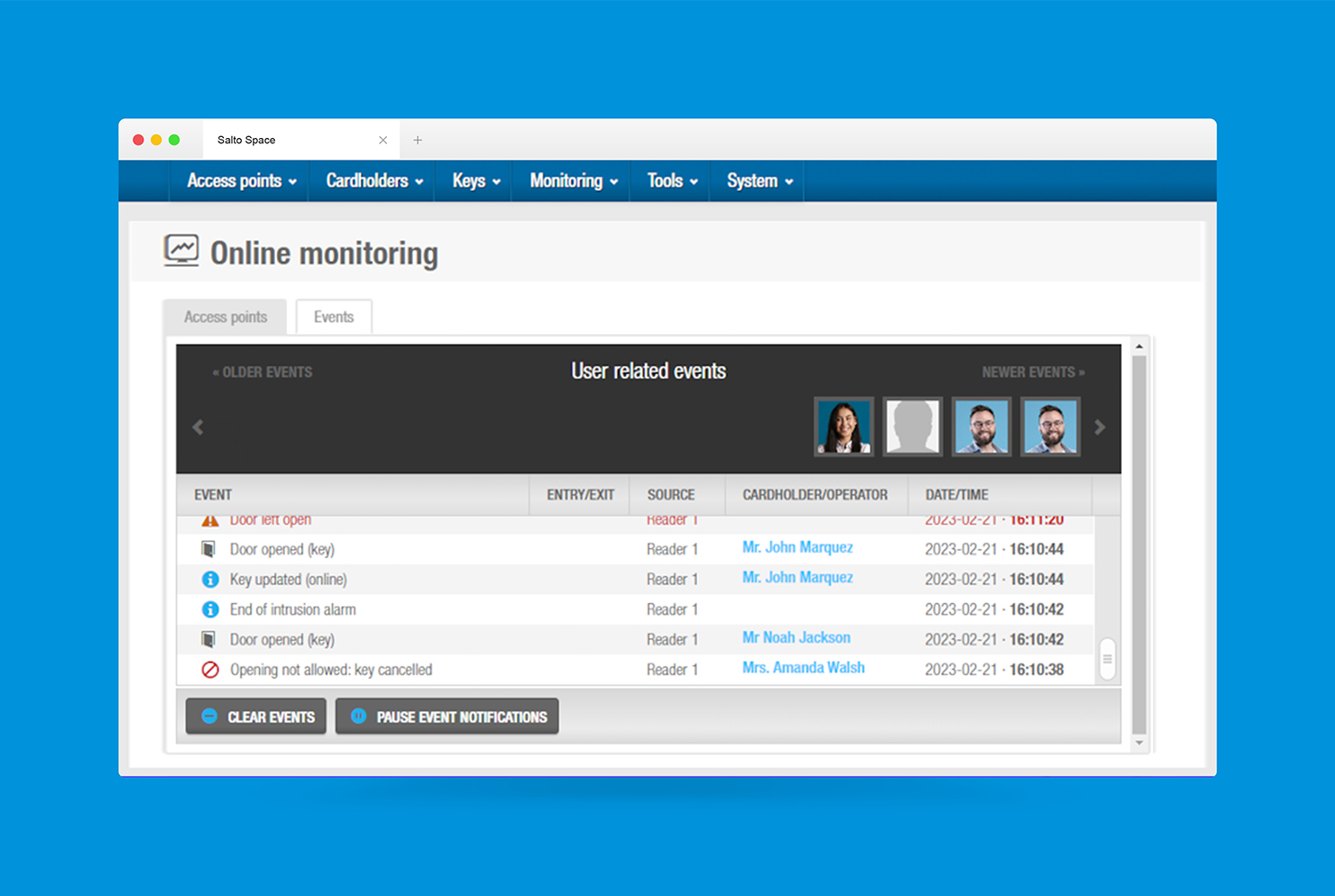
Homelok: Access control incident notifications for residential and multi-family properties
With Salto Homelok's SVN keyless and cloud-based access control platform for residential and multi-family properties, managing access has never been easier. The platform offers quick online administration, giving property managers and residents seamless control over every entry point in the building.
Salto Homelok's administrator activity screen provides a comprehensive list of events ordered by date and time. Users can easily track activities such as user creations, door unlocks, and access denials. This feature allows property managers to stay informed about all access-related actions within their properties.
- System Events: System Events are triggered by user actions within the software, typically by individuals with management roles in Homelok. Examples of System Events include user creations, access modifications, and key assignments.
- Device Events: Device Events are generated by access points and doors within the installation and are primarily initiated by keyholders gaining access. Examples of Device Events include door unlocks by users, access denials, and firmware updates.
- Unit Activity Monitoring: For property managers, Homelok offers unit-specific activity tracking. In addition to the main activity section, managers can view unit-related events such as unit creations, move-ins, move-outs, and deletions. This allows for a detailed overview of activities specific to individual units within the residential properties managed through Homelok.
- SVN Events – Offline Event Registration: The Salto Homelok cloud-based platform introduces a revolutionary feature known as offline events within SVN (Salto Virtual Network). This capability allows the system to capture user and access point events, such as a user unlocking a door, and record them in the activity section – even when both the lock and the user's phone or credential are offline.
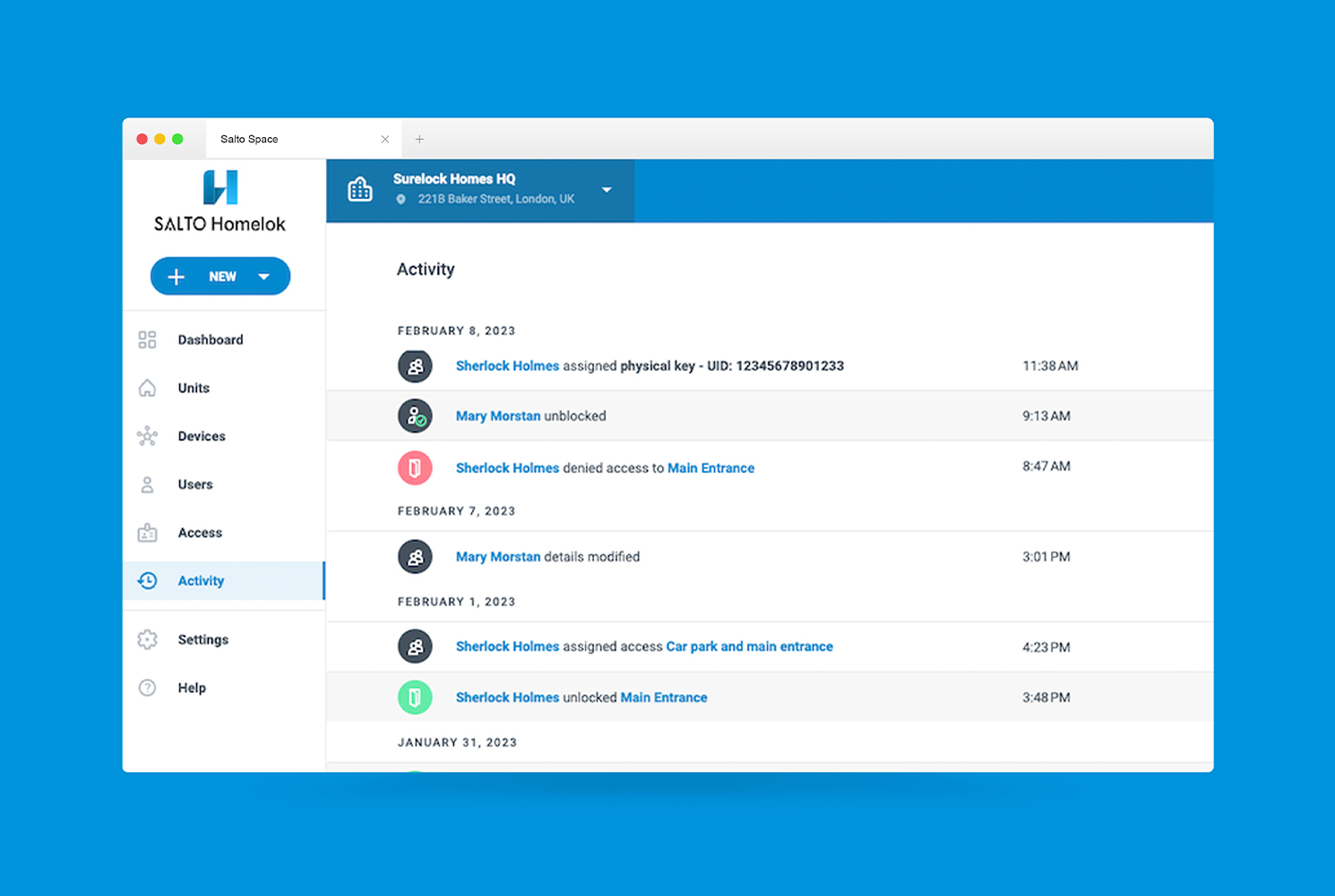
Impact of security monitoring across industries
Recent enhancements to the Salto KS and Space smart access platforms greatly improve incident notification management across different industries, making it easier to tailor responses to specific building needs:
-
Working Spaces: Operators in coworking spaces can delegate notification responsibilities to system administrators like office managers and technical staff. Office managers can get alerts for unauthorized access attempts, and technical staff can be notified about low battery incidents and system malfunctions, ensuring a secure and seamless working environment.
-
Hospitality: Property owners and managers can delegate notification responsibilities to system administrators, such as hotel front desk staff and maintenance staff. Security managers, for example, can receive immediate notifications for guest check-in, privacy, doors left open, while maintenance staff can be alerted about low battery incidents, ensuring swift action and smooth operations.
-
Residential: Property managers can tailor the notification system and delegate alert responsibilities to system administrators like security personnel and homeowners. A convenient smart access solution for residential properties, connecting access control to security infrastructure to manage any access point allows property managers the capability to receive alerts about unauthorized entry attempts while homeowners are sent notifications about door status changes and low battery issues.
-
Student Accommodations: Student residential buildings such as dormitories or apartments benefit from enhanced customization and delegation features. Site Owners can assign campus security as Site Admins to receive after-hours access alerts. Maintenance staff, also as system administrators, are alerted to system malfunctions or doors left open, facilitating a safe environment.
-
Healthcare: Set up real-time alerts for security staff and maintenance personnel to meet the unique security challenges of healthcare. Security staff, as system administrators, receive notifications for tampering or unauthorized access to sensitive areas, and maintenance staff are notified about low battery levels, ensuring locks function correctly.
-
Education: Manage staff, student, and visitor access to buildings or restricted areas on campus grounds using a role-based system with instant detection of individuals at access points. Receive instant notifications and configure customized responses for multiple crisis levels. Enable area-specific protocols for emergency lockdowns or openings. Incorporating electronic door locks for schools improves school security and crisis management plans.
Improvements to the Salto smart access control platforms’ incident notification system mark a significant advancement in the management of security alerts. By empowering both owners and system administrators with better tools for managing notifications and offering extensive customization options, the system ensures that the right personnel are alerted to the right issues at the right time.
These enhancements help streamline operations and improve response times across various industries, supporting organizations in maintaining better security and efficiency.
For more information on how to manage incident notifications, visit the Salto support portal.
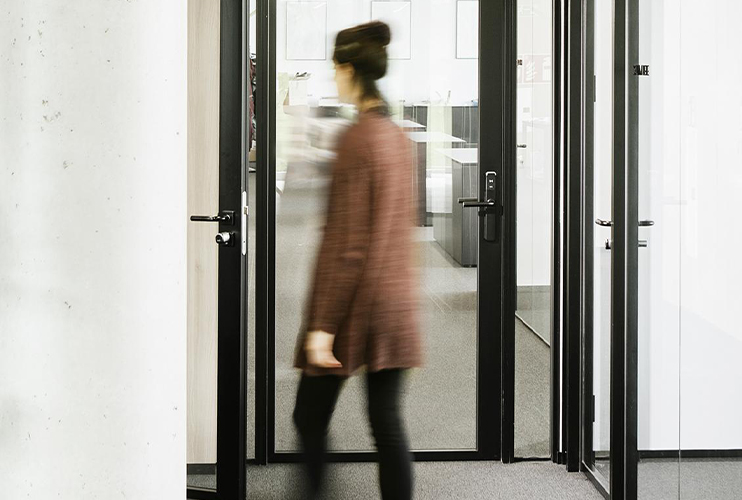
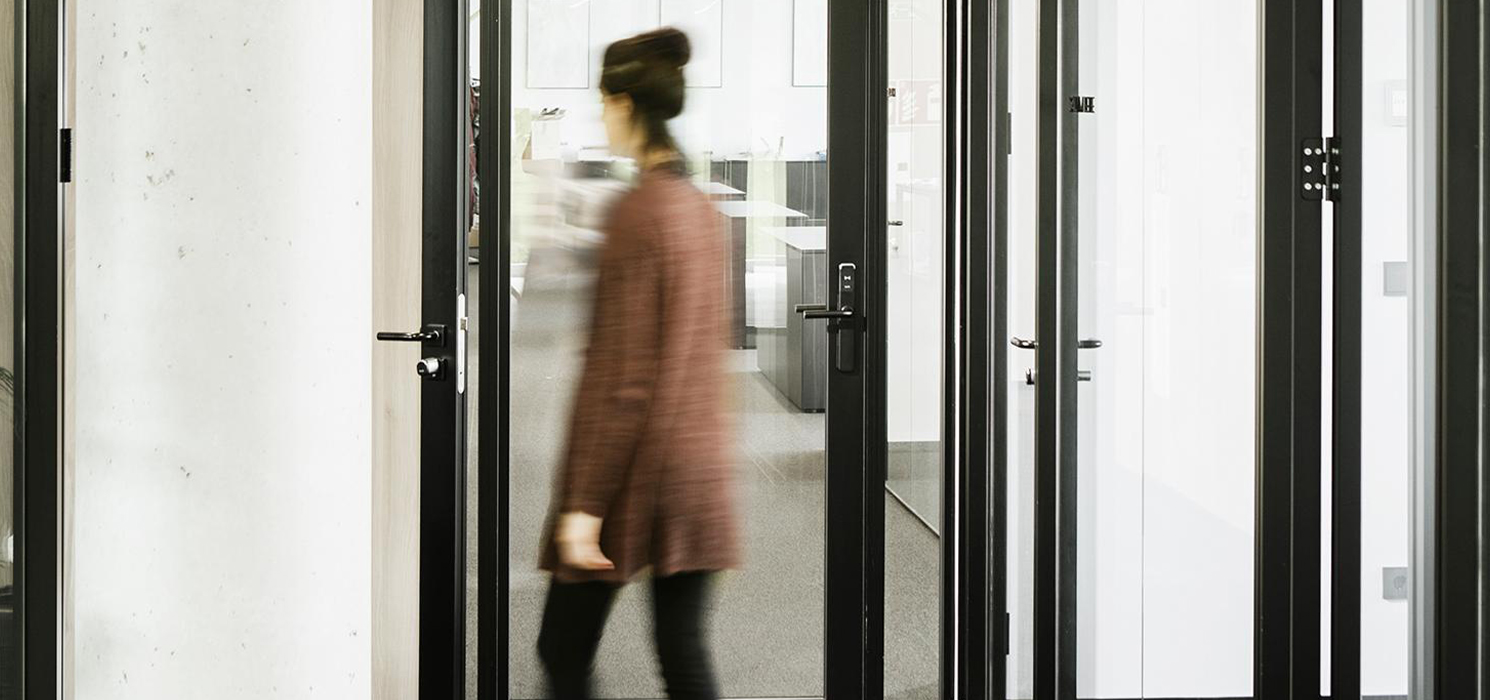
Salto Neoxx Electronic Padlock, a huge upgrade for your security
SALTO Neoxx G3 — This ultimate electronic padlock solution completes the SALTO smart locking product range.
SALTO Neoxx G3 — This ultimate electronic padlock solution completes the SALTO smart locking product range.
Are you tired of dealing with lost keys, managing duplicates, and worrying about unauthorized access? Traditional locks and keys are becoming a thing of the past, and electronic access control solutions are quickly becoming the new standard. It's time to upgrade to the latest innovation from SALTO Systems: the SALTO Neoxx G3. This cutting-edge lock is a new member of the SALTO Neoxx electronic padlock range, which includes the G4 model, guaranteeing options and a choice of models to cater to any need or scenario. This state-of-the-art padlock combines keyless and fully mobile access options with exceptional attention to detail, delivering unbeatable durability and reliability.
The SALTO Neoxx electronic padlock is the most advanced and versatile locking system on the market. Suitable for a wide range of applications, it’s the perfect choice for outdoor deployments that require reporting and advanced technology and the variety of features that only electronic access control can offer.
With the Neoxx electronic padlock, you can say goodbye to traditional keys and locks. Instead, you can use a mobile app or contactless smart keycard to easily open the padlock. Additionally, the padlock can be remotely managed through SALTO's advanced web-based access control technology platform, enabling timely actions such as:
- Instantly granting access to a contractor for maintenance work
- Remotely opening the gate
- Blocking a previously permitted user
- Sending a digital key instantly to a user's smartphone
- … and monitor the entrance or status of the access point in real-time
Our innovative electronic access solutions offer an easy-to-install system that requires no infrastructure, providing a seamless keyless access experience without any wires.
Electronic padlocks: convenient and keyless access
SALTO’s Neoxx G3 and G4 electronic padlocks include RFID, Bluetooth LE, and NFC technologies that provide the ultimate keyless experience and the most advanced electronic locking system available. Say goodbye to traditional keys and locks. Instead, use a mobile app, smartwatch or contactless smart keycard to easily open the padlock whether it’s installed in a remote location or in an area outside of a building’s perimeter. Because Neoxx padlocks can be remotely managed through SALTO's advanced web-based access control technology platform, timely actions — such as blocking a previously allowed user — can be performed immediately.
Neoxx electronic padlocks include SALTO SVN data-on-card technology and are BLUEnet wireless network capable. Thanks to its advanced capabilities, the padlock can read, receive, and write information via a smart card or real-time communications over the air (OTA). The Neoxx also incorporates SALTO’s JustIN Mobile technology which allows users to gain access with an iOS or Android smart device.
Unbeatable protection, durability, and reliability
Featuring a special armoured case with a double-layered structure, the SALTO Neoxx G3 electronic padlock provides unbeatable protection against falls, shocks, and even the harshest environments or usage.
Made of hardened steel with a removable shackle model option, the Neoxx offers ultimate protection against falls, shocks, and extreme usage. The padlock's cover case with a double-layered structure ensures maximum durability and resistance to harsh weather conditions. It is IP66-68 rated for water-resistance and IK08 impact resistant.
Other features include anti-drilling protection, emergency battery change, battery monitoring for optimized maintenance and battery life, optical signaling through light ring, and dual-color green/red lights to indicate access authorization, with optional acoustic signal.
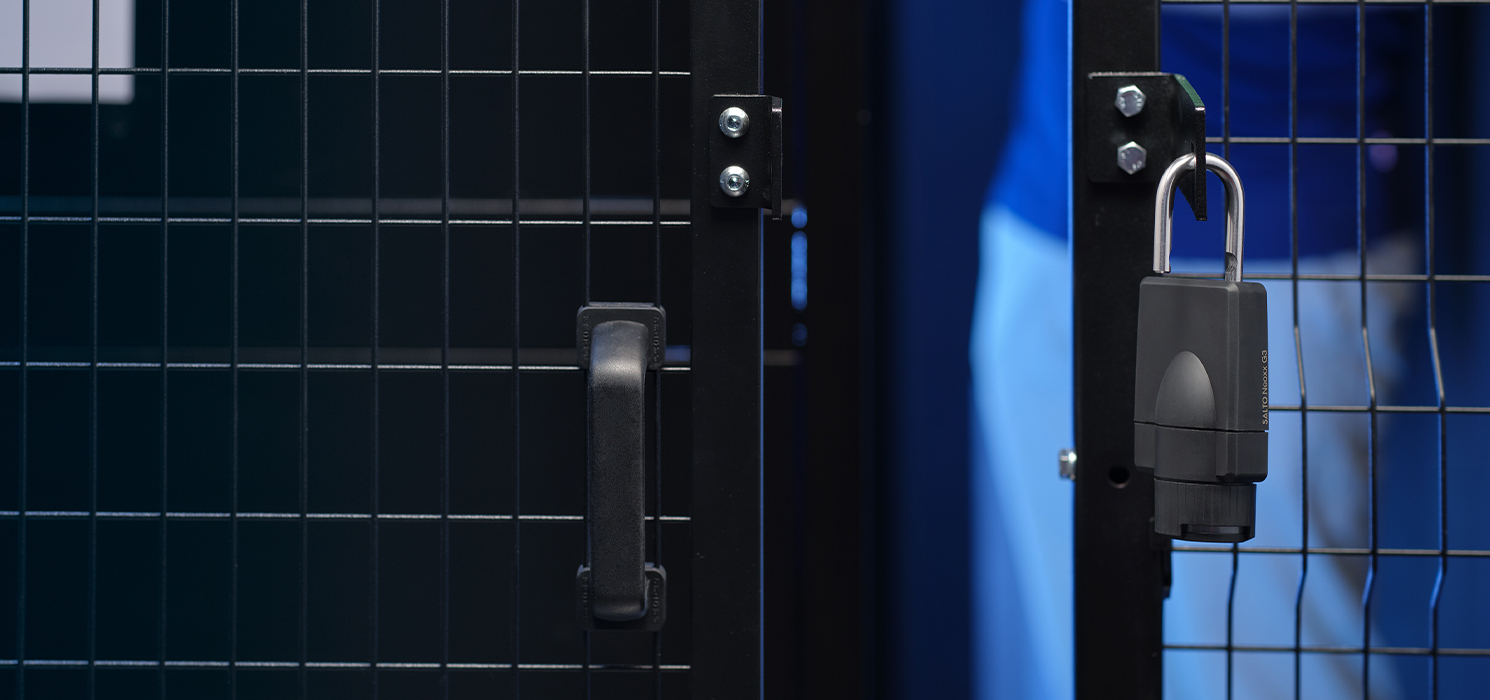
Grade 3 security and beyond
When it comes to choosing the right padlock for your security needs, understanding different security grades is essential.
Understanding Security Grades
Padlock security grades are typically rated on a scale of CEN 1 to 6, with higher numbers indicating superior security features. Let's explore the different security grades and what they mean:
Grade 1: These padlocks offer a basic level of security and are typically suitable for low-risk environments.
Grade 2: Padlocks in this category provide a step-up in security, suitable for applications where moderate protection is required.
Grade 3: Medium to high security. SALTO Neoxx Grade 3 padlocks fit in this category, representinga significant advancement in security. With their robust construction and advanced features, these padlocks are highly resistant to attacks and are suitable for commercial and industrial settings.
Grade 4: High security. If you require even higher security, the SALTO Neoxx product line offers Grade 4 padlocks as part of our electronic padlocks range. These padlocks provide the utmost protection and are ideal for environments where valuable assets need maximum security.
Grade 5: Padlocks in this category are designed to provide superior protection against sophisticated attack techniques. They are commonly used in high-security settings such as government facilities or critical infrastructure.
Grade 6: As the highest level of security, Grade 6 padlocks offer unrivaled protection against the most determined attacks. These padlocks are typically employed in ultra-high-security situations where there is a need for absolute confidence in security measures.
The SALTO Neoxx G3 padlock is certified as a Grade 3 padlock, meeting the highest standards in security and durability. This certification ensures that your property and valuables are kept safe and secure at all times. Additionally, we offer a Grade 4 padlock option in our electronic padlocks range for even higher security requirements. These padlocks not only meet the stringent requirements of their respective security grades but also exceed them, ensuring exceptional protection for your property.
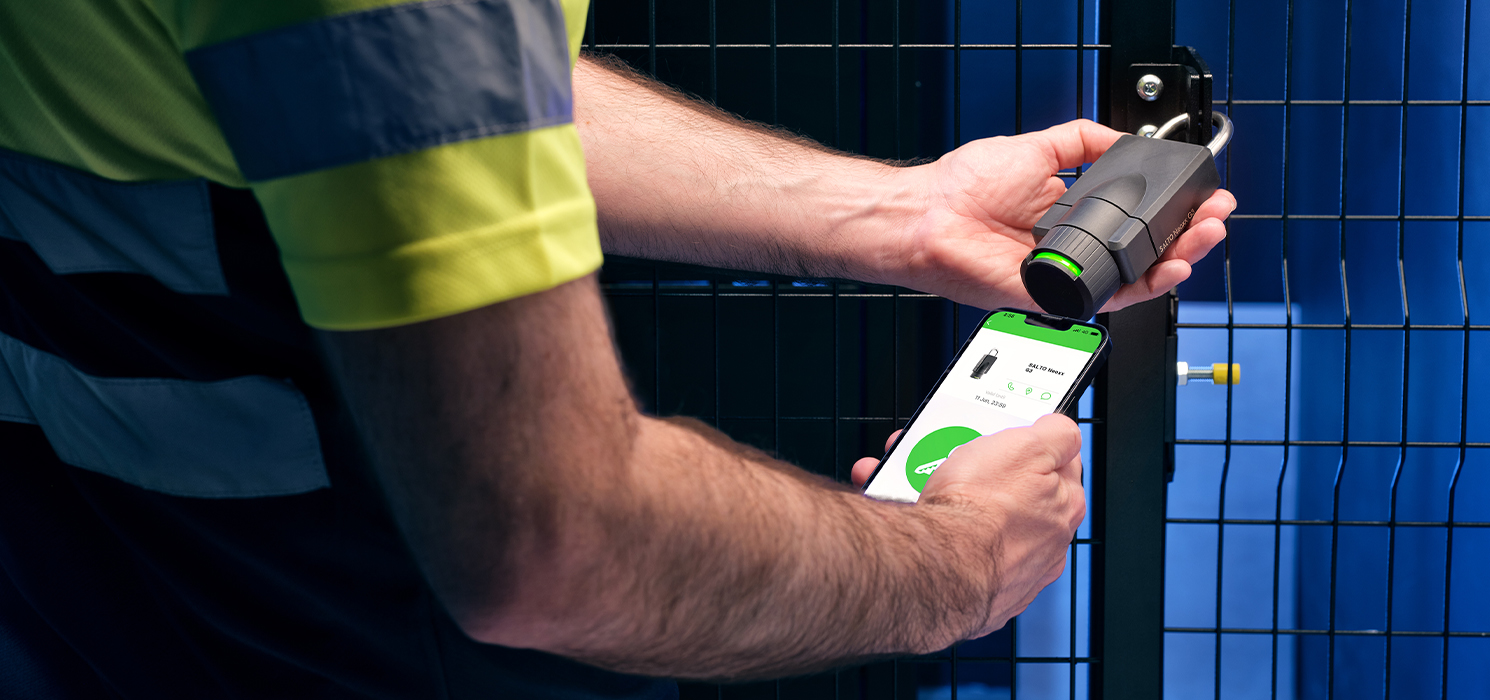
Enhance security and operations
Built to withstand all access needs, SALTO Neoxx electronic padlocks offer a unique solution that is ideal for utility and critical infrastructure security. Whether it's electric power stations, telecom network services, industry applications, or property services that require an additional level of security for specific doors like gates or storages, the Neoxx has you covered.
The SALTO Neoxx G3 electronic padlock is compatible with the SALTO Space on-premise access platform and the SALTO KS and Homelok cloud applications. Together, our solutions deliver a comprehensive access platform for any type of business. With SALTO's range of electronic locking solutions, you can ensure the security and safety of your valuables, users, guests, residents, or visitors.
No matter the type of facility or property, SALTO has the perfect electronic padlock solution to improve security and enhance operations.
For more information and to explore the SALTO Neoxx electronic padlocks, please visit our website here.
We’re excited to bring you the ultimate electronic padlock solution with the SALTO Neoxx G3. Upgrade your security today!
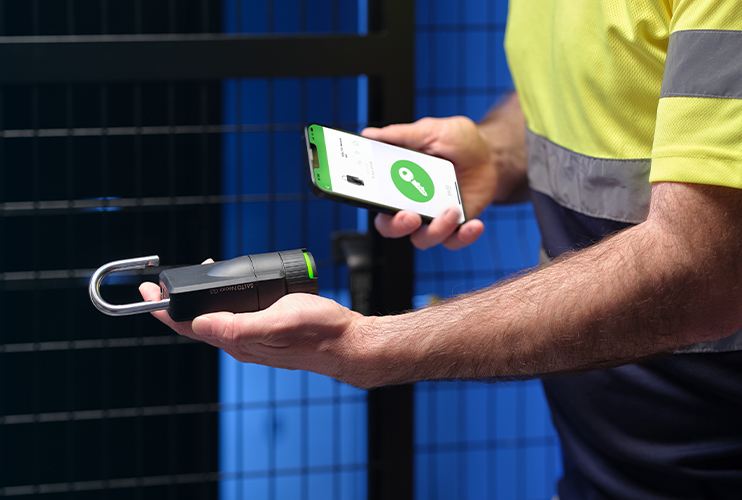
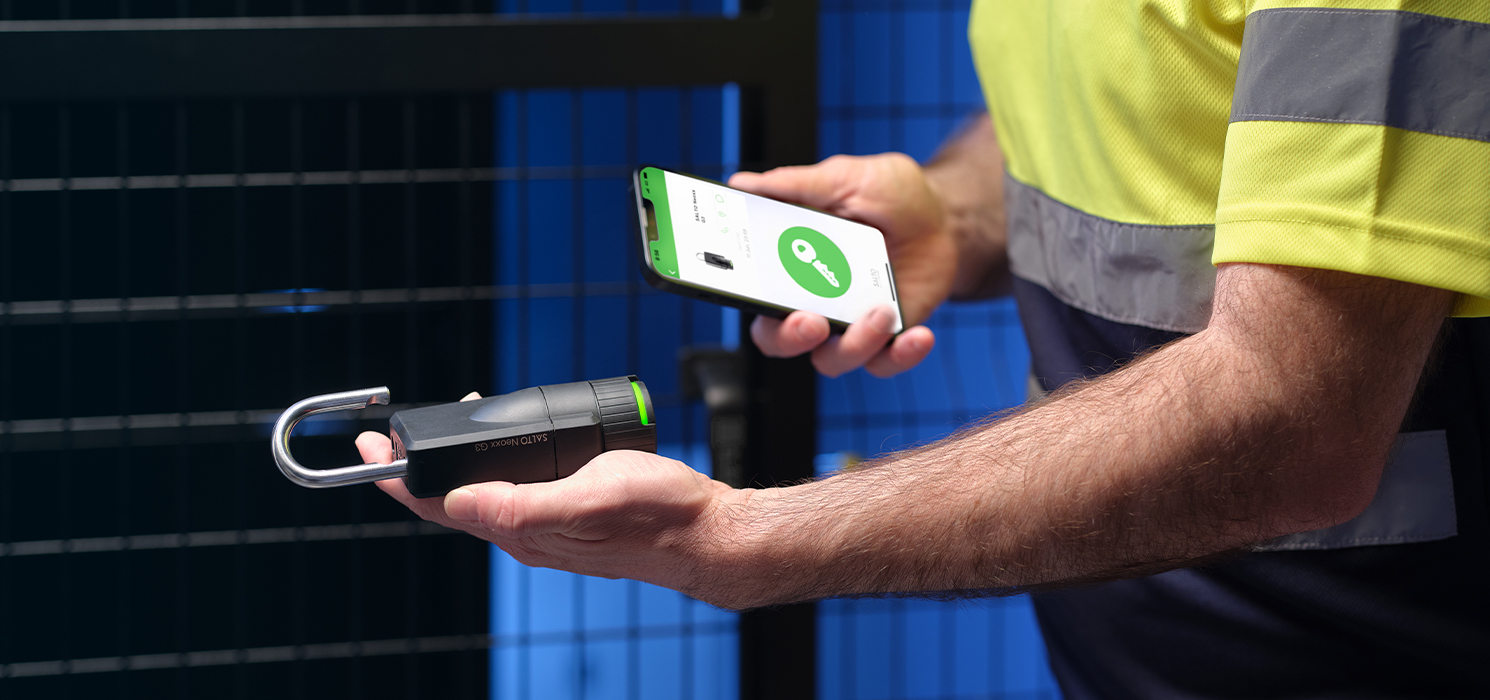
Introducing SALTO KS’ Locker Integration with GANTNER’s NET.Lock
In our efforts to provide our users with a smart access experience, SALTO KS has integrated with NET.Lock from GANTNER - a SALTO Group Company. By utilizing GANTNER’s locker cloud platform, you can now manage and open smart lockers in your SALTO KS Web and Mobile App.
In our efforts to provide our users with a smart access experience, Salto KS has integrated with NET.Lock from GANTNER - SALTO WECOSYSTEM Brand. By utilizing Gantner’s locker cloud platform, you can now manage and open smart lockers in your SALTO KS Web and Mobile App.
Gantner’s locker cloud platform offers an innovative software solution for all those who want a centrally-powered smart locker system without having to set up the corresponding IT infrastructure, such as a server or cloud connection.
Across any industry, locker management can transform the operations of your business, ensuring satisfied customers with guaranteed security and safety. This integration is a joint effort between SALTO WECOSYSTEM Companies, offering a new set of possibilities for both platforms to benefit from each other’s strengths. Users will be able to unlock Gantner locker locks in two different ways: either via Remote Opening from their Salto KS Mobile App or with a Salto smart tag. The best of access control, now leveraging the most modern locker solution.
In the latest Salto KS Mobile App release, version 8.10, we have introduced two functionalities to locker management: Personal Mode and Dynamic Mode. Read ahead as we walk you through both so that you have all the information you need to transform your locker management and assure your customers leave not just satisfied but happy!
Locker Management Modes
Depending on the needs of your business, you can accordingly switch between Personal Mode and Dynamic Mode to cater to your members in the best possible way. Site Admins can manage access to lockers seamlessly from within the Web App, as they always have with other types of locks. The only difference is that there will now be a dedicated, standalone page for managing the lockers.
This integration offers an Audit Trail, where users can see their access history regarding locker openings, the same way they do with other Salto smart locks. Site Admins can do the same in the Salto KS Web App for all users. This will also help to understand and monitor the behavior in locker use to make a selection between the modes. The modes are as follows:
- Personal Mode
A user needs to be assigned to a locker to occupy it. This can be done by Site Admins.
Multiple users can be assigned to the same locker. The locker will only be available to the assigned user(s), who can lock/open it as many times as they want.
It will only be free for use again when unassigned from the previous user(s).
- Dynamic Mode
In Dynamic Mode, a user can occupy any available locker at a given moment. The locker will then only be accessible to that user, who can lock/open it as many times as they want.
It will only be available again when it is released from the previous user. This can be done by the users themselves via the Mobile App, and Site Admins can make use of the Web App to release the locker as well.
A closer look at how Dynamic Mode works
Users can operate and use the lockers via the Salto KS Mobile App. This feature is available for both iOS and Android. In the ‘Locks’ section of the Mobile App, users will be able to see the separate tab ‘Lockers’ if the integration is enabled on their site. Here, they can view the status of lockers as either ‘Closed,’ ‘Open,’ or ‘Locked.’ Open indicates that the locker is physically open, and Closed means that the locker is physically closed but not locked.
In order to occupy a locker set in Dynamic Mode, a user must select an available locker from the options displayed and then click the button ‘Lock Remotely.’ Depending on the locker settings, this button might be ‘Open Remotely.’
Once this button is clicked, the locker will be assigned to the user, and they will be able to open and lock it again as many times as they wish. No one else will be able to use the locker while it is assigned to the user.
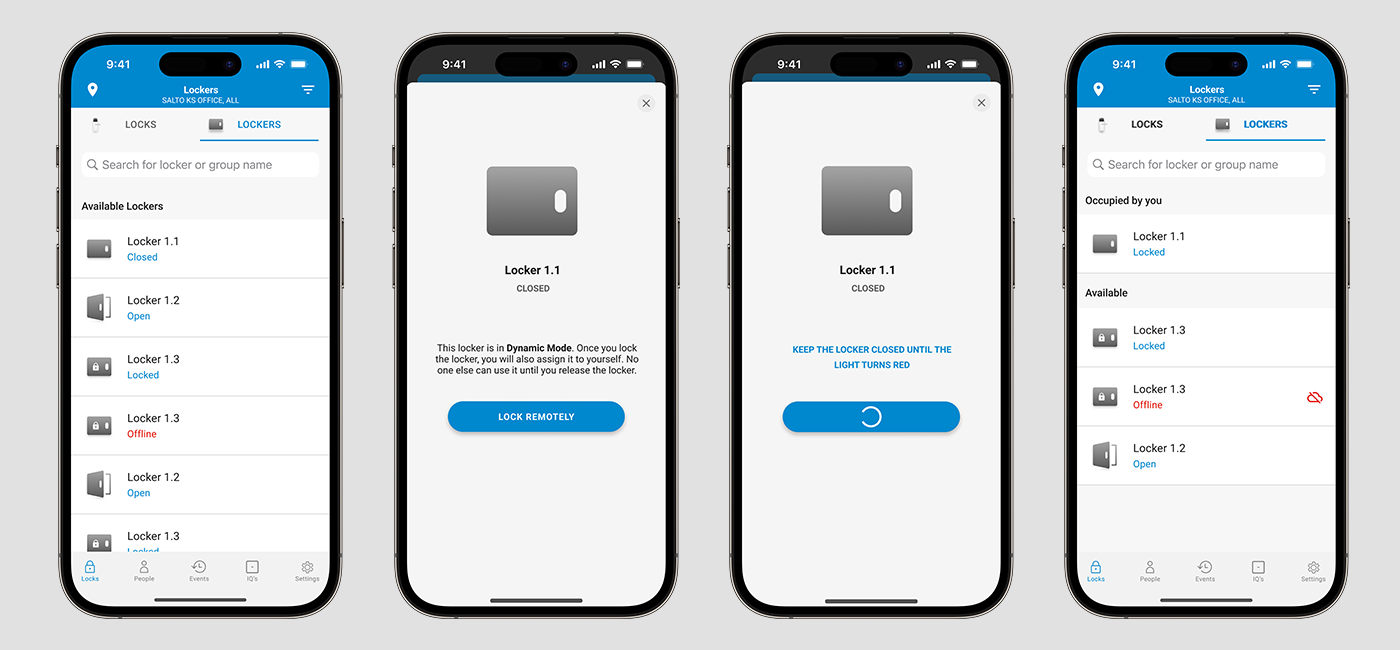
In Dynamic Mode, once the locker has been assigned to a user, the user will then have the option to ‘Open Remotely’ in order to open and access the locker as many times as they wish.
The user will also have the option of ‘Open and Release.’ To “release the locker” means to unassign the locker so that it becomes available for use. For the locker to be released, either the user unassigns it themselves by selecting this button, or it can be unassigned by a Site Admin on the Salto KS Web App. Once the locker has been released, it is vacant and ready again for use.
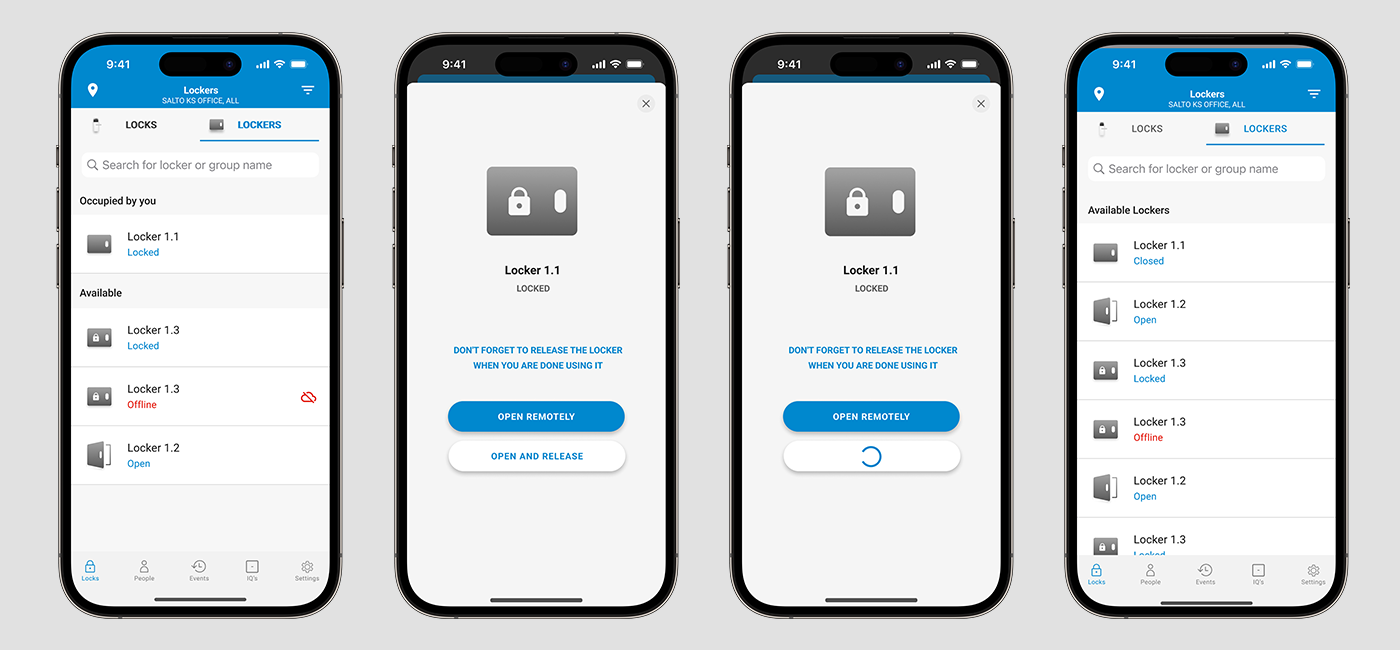
Click here to learn more about the integration of Gantner’s locker cloud platform NET.Lock, and click here to learn more about Salto KS.
We look forward to transforming the user experience of lockers as we know it and elevating the facilities offered across various industries to be secure and reliable.
